








It is a privilege to present the Royal Life Saving Society Australia’s Annual Report for 2024–25, reflecting on a year marked by progress, collaboration, and renewed commitment to drowning prevention and water safety. Our core purpose - bringing people together to eliminate drowning and empower communities to be safe around water - continues to guide our strategic direction and draws strong support from partners including Government.
As President, leading the Board and working alongside our volunteers and staff remains an honour. This year, Royal Life Saving strengthened our national collective by making significant changes to our Constitution. I thank the Board and Members for their collaborative approach throughout the extensive consultation process. We are stronger and better when working together, and these changes will help shape Royal Life Saving’s future successes and impact.
I wish to highlight areas beyond governance that make me proud of the organisation’s impact.
The 2025 National Drowning Report was launched by Minister Anika Wells at Parliament House, in front of Members, Senators and many partners from across the water safety sector. Developed in partnership with Surf Life Saving Australia, the report is a wake-up call, highlighting heightened risks for disadvantaged, multicultural, and regional communities.
A concerning 27% rise in drowning deaths to 357 over the past year - driven by declining swimming skills, especially among children, an ageing population, and increased exposure to remote waterways without lifesaving services - should concern us all.
We are committed to bringing people together to solve problems. Two examples are close to my heart.
First, the Aquatic Infrastructure Symposium brought together over one hundred leaders - including planners, council representatives, and architects - to co-design future-ready aquatic facilities that support swimming skills and community wellbeing, especially for growing regional areas and vulnerable populations.

Second, the Swimming and Water Safety Education Roundtable responded to research showing that 50% of children leave primary school unable to swim 50 metres or float for 2 minutes. The Roundtable established a national six-point action plan, uniting educators, policymakers, and sector leaders to ensure no child or youth misses out on vital swimming lessons or lifesaving skills, boosting equitable access and retention across Australia. I look forward to ensuring these events continue to create widespread impact, empowering communities to be safe around water.
In 2024–25, Royal Life Saving celebrated extraordinary milestones across the nation.
New South Wales marked 130 years of lifesaving service, commemorated with a landmark exhibition showcasing its heritage and community impact at NSW Parliament House.
Queensland reached 120 years, acknowledging a long-standing commitment to water safety, education, and collaboration in a gala event attended by the Minister for Police and Emergency Services. Launch of the National Drowning Report 2025 at Parliment House, Canberra.
The Northern Territory achieved 60 years, celebrated at a Government House function, highlighting decades of dedication to drowning prevention and water safety education. These milestones represent generations of passionate volunteers, innovation, and leadership, ensuring safer, more resilient communities. Our State and Territory achievements collectively inspire us to keep striving for inclusion and the highest standards in water safety.
Appreciation and Call to Action Finally, I express my deep appreciation to the Board, CEO and staff, volunteers, members, and partners - your contributions are fundamental to our success. As Australia faces new challenges in water safety and drowning prevention, we must move forward united by resilience, commitment, and a sense of building legacy for future generations.
ALEXANDRA ASH
National President
Royal Life Saving Society – Australia
Patron
HER EXCELLENCY THE HONOURABLE MS SAM MOSTYN AC Governor-General of the Commonwealth of Australia
National Board of Directors
President
ALEXANDRA ASH
MBA, MPol&Policy, BCom, BExSS, GAICD
Alex was appointed by the Board as an Independent Director to the Board in March 2022 and was elected National President in November 2023.
Deputy President
JIM WHITESIDE
AdvDipFrontLnMgt
Jim is President of Royal Life Saving Society Australia, New South Wales, and was appointed to the Board in October 2016 and was confirmed as National Deputy President in November 2023.
ASSOCIATE PROFESSOR GEMMA CRAWFORD
PhD, MHlthProm, PGDipPublHlth, BA(Psych), SFHEA, IUHPE RHPP (Aust.), LMAHPA, FRSPH, MPHAA, AFAIM.
Gemma was appointed to the Board in December 2024 by Royal Life Saving Society Western Australia.
PROFESSOR RICHARD FRANKLIN
PhD, BSc, MSocSc(Health), GradCertTertEdu, GradCertAustRuralLeadership FPHAA, FACTM, FARL
Richard was appointed as an Independent Director to the Board in March 2022.
KIA LOGAN
MBA, AdvDipBusMgt, AdvDipHR
Kia is a Director of Royal Life Saving Society Australia, South Australia, and was appointed to the Board in December 2023.
PAUL REYNOLDS
Paul was appointed to the Board in November 2019 by Royal Life Saving Society Australia, ACT.
MARK SCOTT ESM
Mark is a Director of Royal Life Saving Society Australia, Victoria, and was appointed to the Board in November 2019.
JAMES SHERIDAN
BBus, MTechMgt(RiskMgt)
James is a Director of Royal Life Saving Society Australia, NT. James was appointed as a Director in November 2021 by Royal Life Saving Society Australia, NT.
NICOLE SLOAN
BBA (HR), GAICD
Nicky is President of Royal Life Saving Society Australia, Queensland, and was appointed to the Board in November 2023.
Company Secretary
DR JUSTIN SCARR
PhD, MBA, Bed, GAICD
Justin has been a senior executive for the past 26 years and was appointed as Chief Executive Officer and Company Secretary in January 2013.
Royal Life Saving continues to address priority issues across water safety, drowning prevention, community safety, and aquatic industry development. The President described this year’s National Drowning Report as a wake-up call. Internally, we have worked to address the three key factors behind the recent surge in drowning: 1) declining swimming skills, 2) an ageing population, and 3) more people visiting remote and unfamiliar locations. This year, we delivered several key initiatives to turn this around, many of which are highlighted in this report.
In July, with Surf Life Saving Australia, we delivered the National Water Safety Summit 2025 for the Australian Water Safety Council. Held on World Drowning Prevention Day (July 25), the Summit united over 240 experts to renew Australia’s commitment to halving drowning deaths by 2030. The event launched the Australian Water Safety Strategy 2030 – 2025 Update Consultation Draft, inviting national input and calls for collaboration.
Water Safety Strategy 2030 Update
At the midpoint of the Australian Water Safety Strategy 2030, urgent collective actionanchored in evidence, innovation, and collaboration - is needed to reverse rising drowning rates.
The Strategy underwent a full review, with workshops and feedback nationwide. The new version will focus on reversing the decline in swimming skills, boosting local approaches, and tightening alignment across governments and the sector.
We set the agenda and drive broad conversations, using data and insights for advocacy and public awareness. This year saw key campaigns like Keep Watch, Make the Right Call, Respect the River, Summer Water Safety, and growth in multicultural and Indigenous partnerships.
New research reinforced the need for swimming skills, more community pools, and tailored programs. Staff covered media needs tirelessly.

water safety coalitions and plans
We continue to focus on facilitating local water safety coalitions to promote safer environments for rivers, lakes, and creeks through national funding and local engagement. Supporting local approaches, especially in inland communities, is an approach initially developed through Respect the River program. Now local water safety coalitions are a key part of the AWSS 2030, we expect to see many more emerge.
There has been strong progress developing the aquatic workforce, launching new safety initiatives, and advancing the National Aquatic Industry Committee’s work. These represent our commitment to industry professionalism and inclusion.
Occupational violence against lifeguards and swim teachers prompted the “Keep Your Cool at the Pool” campaign, promoting respect and safe spaces for all.
An update to the Pool Lifeguard Manual, many new GSPO guidelines and the State of the Industry Report, are just some examples of the impacts we are having in this area.
Global Momentum
We are proud to provide significant leadership in elevating global awareness and action for drowning prevention, recognising that drowning is the leading cause of death for children aged 1–14 in many neighbouring countries.
This year, two initiatives stand out. First, we contributed to the WHO’s 2024 Global Status Report, which revealed over 300,000 drowning deaths annually. Second, through our role on the Global Alliance, we are leading development of the Global Strategy for Drowning Prevention. The Strategy seeks to coordinate international efforts, targeting a 35% reduction in drowning deaths by 2035.
Collaboration matters
Thank you to all Board members, partners, volunteers, staff, and State and Territory teams, whose dedication drives our mission. I am especially grateful for the support of President Alexandra, Deputy President Jim Whiteside, and the executive staff: RJ Houston, Monique Sharp, Linda Luu, and Stacey Pidgeon.
The future requires agility, unity, and innovation. By living our values and succeeding together, Royal Life Saving can maximise its impact to eliminate drowning and empower all communities to be safe around water.
DR JUSTIN SCARR
Chief Executive Officer
Royal Life Saving Society - Australia
Chief Executive Officer
DR JUSTIN SCARR
Marketing and Events
National Manager Marketing and Events
MONIQUE SHARP
Content and Digital Communications Executive
SUSIE SMITH (until May 24)
Operations
General Manager Capability and Industry
RJ HOUSTON
National Manager Education
PENNY LARSEN
National Manager Industry Safety
MARTY MORAN
National Manager Training and Workforce Development
SHAUN JACKSON
National Manager Lifesaving Development
BROOKE CHERFILS
IT Manager National Projects & Integration
MANIK KHANNA
Research and Policy
National Manager Research and Policy
STACEY PIDGEON
National Manager Drowning Prevention Strategy
DR WILLIAM KOON
Senior Research and Policy Officer
LAUREN MILLER
Research and Data Project Officer
ABHINAV DAHIYA (December 2024 - June 2025)
Data Science Officers
MACKENZIE HALLER
LASINDU YAPA ABEYWARDENE
Finance and Administration
National Manager Finance
LINDA LUU
Administration and Accounts Officer
BOUNTHANH CHANHDARA
Bringing people together to eliminate drowning and empower communities to be safe around water.
OUR PURPOSE
Eliminate drowning.
OUR VISION
A water-loving nation free from drowning.
Drowning is preventable. Being able to swim is a human right.
Having the skills to enjoy the water safely is essential.
Access to safe places to swim contributes to happy, healthy, connected communities. WE BELIEVE

OUR VALUES
We value fairness, kindness, mutual respect and acting with empathy.
We value partnerships with impact, creating positive change, and solving problems with partners.
We value quiet determination, bold decisions, and doing the right thing above all else.
We value building and supporting communities with shared values, common purpose and deep commitments to diversity, equity, and inclusion.
View the Strategic Framework: royallifesaving.com.au/strategic-framework
Leadership
Research
Partnerships

Purpose
People


DROWNING SNAPSHOT 1 JULY 2024 TO 30 JUNE 2025
357 Drowning Deaths in 2024/25
81% OF ALL DROWNING DEATHS WERE MALES
32% OF PEOPLE WHO DROWNED WERE BORN OVERSEAS
27% increase
281 10-Year Average
121 Drowning Deaths at inland waterways in 2024/25
33% WERE ADULTS AGED 65 YEARS AND OLDER
44 DROWNING DEATHS WERE AGED 15-24 YEARS
The highest number of people who drowned in 2024/25 were born in United Kingdom and China, followed by people from India, Malaysia, Nepal, and Papua New Guinea.






INLAND WATERWAYS reside in the most disadvantaged areas
23% increase
98 10-Year Average
48% of year 6 students cannot swim 50 metres and tread water for 2 minutes.
40% of year 7-10 students cannot achieve the National Benchmark for primary school students.
After year 7 there is little improvement in swimming ability.
84% of year 10 students cannot swim 400 metres, the National Benchmark for 17 years.
The average public pool in Australia was built in 1968.
500 (40%) of public pools will reach the end of their lifespan this decade.
$910 million annually would be the likely social, health and economic cost should 10% of aquatic facilities fail to be renewed by the end of this decade.
SOCIO-ECONOMIC ADVANTAGE AND DISADVANTAGE
Drowning deaths by IRSAD decile, 2024/25
2.2x
PEOPLE RESIDING IN THE MOST DISADVANTAGED AREAS DROWNED AT A RATE 2.2 HIGHER THAN PEOPLE WHO RESIDED IN THE MOST ADVANTAGED AREAS
Our work is focused on six key priorities.
Drive the Australian Water Safety Strategy
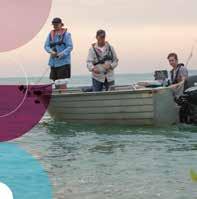
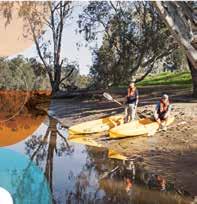


CONSULTATION DRAFT
AUSTRALIAN WATER SAFETY STRATEGY 2030 Towards a nation free from drowning 2025 UPDATE
Foster a skilled and valued aquatic workforce

Ensure no child misses out on swimming and water safety
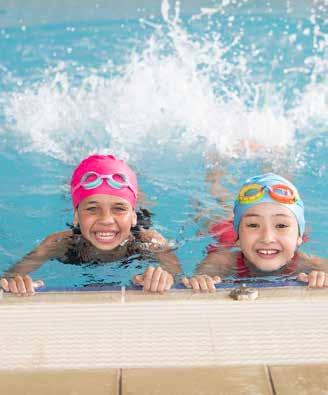
Advocate for safe access to inland waterways

Save the community pool

Ensure that everyone has access to a safe place to swim

Provide leadership, advocacy, and research to national, state, and community approaches to drowning prevention and water safety.
KEY ACHIEVEMENTS
Leadership and commitment to the Australian Water Safety Strategy
Draft Midpoint Update of the Australia Water Safety Strategy 2030
Hosted the National Water Safety Summit 2025 Management of the Summer Drowning Toll
Research and release of the National Drowning Report 2025
Released Enhancing Cultural Connection to Water for Aboriginal and Torres Strait Islander Peoples report
Journal Articles Published
Published Drowning prevention strategies for migrant adults in Australia: a qualitative multiple case study
Published an Analysis of Unintentional Fatal Drowning in Australia (2002–2022): Progress, Challenges and Data to Inform Prevention
Member of the Global Alliance for Drowning Prevention, with the launch of the consultation draft of the Global Strategy for Drowning Prevention.
Contributor to the WHO Global Status Report on Drowning Prevention
Collaboration with SwimSafe Kerala India
Facilitated the International Women’s Day Webinar Celebrating Women in Drowning Prevention



Leadership and Commitment to the Australian Water Safety Strategy 2030
Royal Life Saving Australia plays a key leadership role in managing the secretariat of the Australian Water Safety Council (AWSC), with the support of the Australian Government and in close collaboration with foundation members Surf Life Saving Australia and AUSTSWIM.
Royal Life Saving Australia allocates significant resources to the implementation of the Australian Water Safety Strategy (AWSS) and has overseen the development, release, and ongoing evaluation of the Australian Water Safety Strategy 2030.
The AWSS 2030 sets an aspirational goal of reducing drowning by 50 per cent by 2030.
It serves as a critical framework guiding national, state, territory and community efforts to prevent drowning and promote safe use of waterways and swimming pools.

Australian Water Safety Strategy 2030: 2025 Updated Framework
Swimming and water safety skills for all
Strengthen government programs
Ensure no one misses out
Infrastructure and workforce
Localised water safety efforts
Local water safety coalitions
Local water safety plans
Aligning policies and partnership for change
Strategic government alignment
Scaled resources for impact
2025 marked the halfway point of the Australian Water Safety Strategy 2030, providing a crucial opportunity to assess national progress and ensure current priorities remain fit for purpose.
Royal Life Saving Australia led a national consultation process involving workshops, stakeholder forums and research reviews. These sessions explored emerging trends and the actions most needed to achieve the Strategy’s goal of halving drowning by 2030.
The chart below tracks actual drowning rates and counts against the targets required to achieve a 50% reduction by 2030. At the midpoint of the Strategy, drowning rates are rising rather than falling - a clear signal that urgent collective action is required to reverse the trend.
The Draft Midpoint Update was launched at the National Water Safety Summit, with more than 240 delegates engaging in plenary sessions and workshops that examined the drivers behind increasing drowning rates and renewed a shared commitment to improvement.
In this midpoint refocus, three National Imperatives identified critical areas where bold, sustained action is needed to drive systematic chance and reverse the fatal drowning trend.
1. Swimming and water safety skills for all 2. Localising water safety efforts
3. Aligning policies and partnership for change
A public consultation process was undertaken, with feedback from the Summit and online submissions shaping the Final Updated Strategy, to be released ahead of Summer 2025–2026.
“The midpoint review gave us the opportunity to pause and reflect on the progress we’ve made - and where renewed focus is urgently needed. By identifying three National Imperatives, we’re ensuring our collective efforts are sharper, more coordinated, and squarely aimed at reversing the rise in drowning and strengthening water safety for every community.” Dr William Koon, National Manager Drowning Prevention Strategy
Annotated AWSS 2030 overall fatal drowning midpoint status: Comparing actual trends, rates per 100,000 population, and counts to target trends and counts needed for a 50% reduction by 2030.
Renewing Commitment to Halving Drowning by 2030
Australia’s leading water safety experts came together in Sydney for the National Water Safety Summit 2025, marking World Drowning Prevention Day. Hosted by Royal Life Saving Australia and Surf Life Saving Australia on behalf of the Australian Water Safety Council, the two-day event brought together over 240 delegates from across water safety, health, education, aquatic industry, and community sectors.
The Summit provided a critical opportunity to review national progress, strengthen alignment, and chart the course towards achieving the Australian Water Safety Strategy 2030 goal of halving drowning deaths.
“Every life lost to drowning is devastating and preventable. By uniting the expertise of communities, governments, and stakeholders, we can strengthen swimming skills, address inequities, and drive collaboration,” said Dr Justin Scarr, CEO, Royal Life Saving Australia.
Friday’s proceedings, held on World Drowning Prevention Day, were officially opened by The Hon Matt Thistlethwaite MP, Assistant Minister for Immigration and for Foreign Affairs and Trade, who reinforced the importance of government leadership and coordinated national action.
The event concluded with the release of the Australian Water Safety Strategy 2030 – 2025 Update Consultation Draft, inviting public feedback to shape the next phase. This renewed Strategy will guide collective action, building on Australia’s recognised global leadership in water safety.

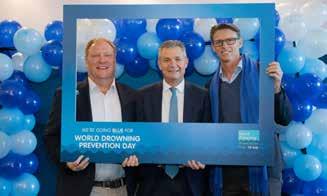

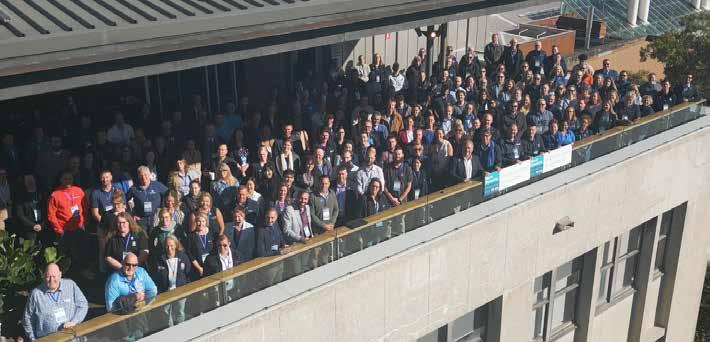





Since 2018/19, Royal Life Saving Australia has tracked and reported drowning deaths each summer to inform the community, support media coverage, and reinforce water safety messages.
In summer 2024/25, 104 people lost their lives to drowning - up 5% on last summer and 14% above the five-year average.
Royal Life Saving CEO Dr Justin Scarr said: “This summer was tragic in so many ways. Too many families and communities have been affected by drowning. The figures reinforce long-held concerns that many Australians lack the swimming skills to enjoy the water safely.”
Contributing factors include the decline in children’s swimming skills - worsened by pandemic lesson disruptions - and increased migration from countries where swimming is uncommon.
To reverse these trends, Royal Life Saving is calling for:
1. National investment to boost children’s swimming and lifesaving skills, especially ages 10–14.
2. Large-scale programs for refugee and migrant communities delivered through local pools.
3. Expanded local water safety planning and coordination, aligned with the Australian Water Safety Strategy.
4. A strategic plan to invest in and refurbish community pools and learn-to-swim centres.

Key findings included:
Older Australians: 32% of drownings aged 55+.
Children: 10 children (0–14 years) drowned.
Gender: Males accounted for 81% of deaths.
States : NSW (33), VIC (22), QLD (22), WA (15).
Locations: One third each occurred at beaches (32%) and rivers (30%). Swimming pool drowning deaths (11) doubled compared to last summer.
Regional risk: 64% occurred in regional areas, reflecting greater exposure to natural waterways and reduced access to safe swimming venues. Holiday peak: 17% of deaths occurred in the week between Christmas and New Year.
“Investment in community swimming pools has always been a cornerstone of Australia’s approach to drowning prevention. More is needed to meet the medium-term impacts of ageing pools, changing demographics, and growth in regional and outer metropolitan areas,” Dr Scarr said.
The Summer Drowning Toll remains a vital tool for raising awareness and guiding prevention efforts across Australia.
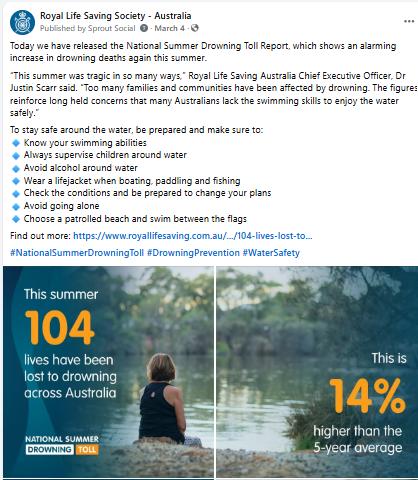

The National Drowning Report 2025, published by Royal Life Saving Australia in partnership with Surf Life Saving Australia, was launched by the Hon Anika Wells MP, Minister for Communications, Minister for Sport on Tuesday 26 August 2025 at Parliament House Canberra.
The report found there were 357 drowning deaths over the past 12 months, which was 27% higher than the 10-year average.
Royal Life Saving Australia, CEO, Dr Justin Scarr said “This is a wake-up call. Drowning deaths have surged to unprecedented levels. The decline in swimming skills, an ageing population, and more people heading to remote and unfamiliar locations away for lifesaving services are causing concern.”
“Half of all children leave primary school unable to swim 50 metres and float for 2 minutes, causing lifelong risk. To reverse this tragic drowning trend, every Australian, regardless of postcode or background, must have access to swimming lessons, a great local swimming pool or a safe place to swim.” Dr Scarr says.
Federal Minister for Communications, Minister for Sport, the Hon Anika Wells MP said, “In partnership with organisations like Royal Life Saving Australia and Surf Life Saving Australia, we are committed to addressing water safety by encouraging all Australians to take simple precautions around pools and waterways.
“The messages are simple; supervise children, learn to swim, prioritise water safety and lifesaving skills, wear a lifejacket when boating, and always swim between the red and yellow flags,” Minister Wells said.
Royal Life Saving Australia and Surf Life Saving Australia explain the surge in drowning as being driven by:
More people are going further into national parks and regional areas. Climate and lifestyle shifts are increasing time around water, especially in autumn and spring, as well as early and late in the day.
Swimming skills are at crisis levels, with many children failing to meet national benchmarks; gaps are widening for regional, remote, and migrant communities, creating lifelong vulnerabilities to drowning.
An ageing population is impacting on drowning. A lifelong love of water activity, combined with other health conditions, medications and reduced mobility, is increasing unexpected falls into water.
Disadvantaged, multicultural, regional and remote populations are most likely to miss out on learning to swim, have poorer access to a safe place to swim and remain overrepresented in drowning.
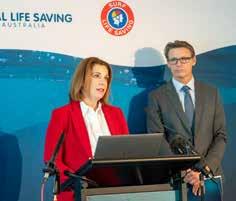

NATIONAL DROWNING REPORT 2025
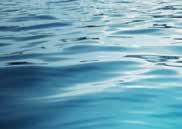


READ THE REPORT AND WATCH VIDEO royallifesaving.com.au/ NDR2025
Image 1: The Hon Anika Wells MP, Federal Minister for Communications, Minister for Sport and Dr Justin Scarr, CEO, Royal Life Saving Australia.
Image 2: Adam Weir, CEO, Surf Life Saving Australia, the Hon Anika Wells MP, Federal Minister for Communications, Minister for Sport and Dr Justin Scarr, CEO, Royal Life Saving Australia.
Image 3: Alexandra Ash, President, Royal Life Saving Australia and Dr Justin Scarr, CEO, Royal Life Saving Australia

357 Drowning Deaths in 2024/25
27% increase
281 10-Year Average
1.31
17% increase
1.12
10-Year Average Fatal Drowning Rate per 100,000
81% OF ALL DROWNING DEATHS WERE MALES
33% WERE ADULTS AGED 65 YEARS AND OLDER
32% OF PEOPLE WHO DROWNED WERE BORN OVERSEAS*
During National Reconciliation Week 2025, Royal Life Saving Australia, in partnership with Guunu-maana (Heal) at The George Institute for Global Health, released the report Enhancing Cultural Connection to Water for Aboriginal and Torres Strait Islander Peoples.
The report explores the deep, enduring connection that Aboriginal and Torres Strait Islander communities have with water and highlights the importance of embedding this knowledge within water safety and drowning prevention strategies. Aligned with the Reconciliation Week theme “Bridging Now to Next,” the report calls on the water safety sector to connect past lessons with future progress - recognising that cultural knowledge, identity and connection to Country are central to both wellbeing and safety.
Aboriginal and Torres Strait Islander knowledge systems are an integral component in the tapestry of the world’s oldest continuing culture. Recognising the intricacies of these systems is a critical process in reversing the colonial narratives, that have deliberately set out to oversimplify Indigenous knowledge and devalue connections to Country.
Aboriginal and Torres Strait Islander peoples represent 3.8% of Australia’s population but account for 5% of drowning fatalities, with most incidents occurring in remote and very remote communities. The report reinforces that acknowledging and integrating cultural perspectives is critical to closing this gap and advancing reconciliation through action.
The report outlines four key recommendations to guide the integration of Aboriginal and Torres Strait Islander knowledge systems across national water safety programs:
1. Reinforce how current programs, initiatives and services can connect to Aboriginal and Torres Strait Islander knowledge systems (meanings and connections).
2. Assess community programs and initiatives for Aboriginal and Torres Strait Islander cultural connection, safety and worldview.
3. Advocate for cultural responsiveness training to be included into the workforce in Australian water safety organisations, including holding a roundtable forum with key stakeholders and partners.
4. Utilise cultural interest to engage children, youth, adults and communities with water safety programs and initiatives.




READ THE REPORT AND RECOMMENDATIONS royallifesaving.com.au/ CulturalConnections Report2025
This artwork was developed Angela Webb, from Gumbaynggirr Nation for Guunu-maana (Heal). The meaning is Heal Spirit, Heal Country.

My name is Xavier Passi, I am a proud Torres Strait Islander, I gather my cultural connections from the Eastern regions of the Torres Strait (Murray Island & Darnley Island) from my father’s side and Mainland South Sea Islander (Solomon Islands) from my mother’s side.
The following is a visual representation of the cultural connection to water, and what that means to me, which depicts many aspects of the cultural principles and values that lay the foundations and represent my identity, through my expression as an artist. There is a range of different components within the artwork that directly relate to Healing, Knowledge, and Life, which are key pillars within my cultural identity.
These components are represented as a mangrove system which is relevant to the Torres Strait Islands, as mangrove systems can be found across many regions of the Torres Strait Islands, they create ecosystems for marine life, which in return provides food and resources for Torres Strait Islander peoples.

This creates a symbiotic relationship and has allowed sustainability of life for many generations. In relations to the data that have been collected, this translates to the transfer of knowledge, represented by the roots of the mangrove system, the knowledge gives us our creation stories, our spirituality, our identity, and relationality (connections to country –Land, Sea, and Sky).
As the mangrove systems have a deep connection to the water, the water itself represents the flow of life, as the mangrove system receives nourishment from the water the same principle applies to how we use this knowledge that has been passed down through generations and connects us to how we live everyday life.


2025
Miller L, Willcox-Pidgeon S, Scarr J-P, & Koon S. (2025). Analysis of unintentional fatal drowning in Australia 2002-2022: Progress, challenges and data to inform prevention. Australia and New Zealand Journal of Public Health 49(4) https://doi. org/10.1016/j.anzjph.2025.100258
Scarr J, Koon W, Peden AE. (2025). Shaping global strategy, mobilising for local action: reflections from the World Conference on Drowning Prevention 2023 Injury Prevention 31:89-93 https://doi. org/10.1136/ip-2024-045368
Willcox-Pidgeon S, Franklin RC, & Devine S. (2025). Drowning prevention strategies for migrant adults in Australia: a qualitative multiple case study. BMC Public Health 25, 1911 https://doi. org/10.1186/s12889-025-23104-5
Willcox-Pidgeon S, Leggat PA, Devine S, & Franklin RC. (2025), Measuring the Swimming Skills of Adults Attending Swimming Lessons in Australia as a Drowning Prevention Measure. Health Promotion Journal of Austral, 36: e70010. https://doi.org/10.1002/hpja.70010
Willcox-Pidgeon S, Devine SG, & Franklin RC. (2025). Adult migrants urgent need for drowning prevention in Australia: water safety perceptions, attitudes, and behaviours, Health Promotion International, Volume 40, Issue 4, daaf109, https://doi.org/10.1093/heapro/daaf109
Koon WA, Brander RW, Lawes JC, Peden AE. (2025). Improving coastal safety for international visitors to Australia. Public Health in Practice 9, 100613 https://doi. org/10.1016/j.puhip.2025.100613
Vearing R, Scarr J, Queiroga AC, Jagnoor J. (2025). Gaps in the evidence for interventions in global drowning research. Injury Prevention. doi: 10.1136/ip-2023045215
2024
Scarr J, Meddings DR, Lukaszyk C, Vincenten JA, Rahman A, Wills S, Jagnoor J. (2024). A framework for identifying opportunities for multisectoral action for drowning prevention in health and sustainable development agendas: a multimethod approach. BMJ Global Health. 2024;9:e016125. https://doi. org/10.1136/bmjgh-2024-016125
This qualitative study explores how swimming and water safety programs can better support migrant adults across Australia.
Published in BMC Public Health, the research was led by Royal Life Saving Australia’s National Manager – Research and Policy, Stacey Pidgeon, in partnership with Professor Richard Franklin and Associate Professor Sue Devine from James Cook University and investigates six culturally tailored water safety programs from across the country.
Multicultural communities are a priority population in the Australian Water Safety Strategy 2030, with people born overseas making up around one-third of all drowning deaths. This study provides critical insights into how culturally inclusive approaches can break down barriers, promote participation, and improve community wellbeing.
1. Motivation and Program Design: Many programs were established in response to local drowning incidents. Successful initiatives provided culturally appropriate swimwear, gender-specific sessions, multilingual instructors, and pathways to aquatic employment.
2. Barriers to Participation: Common challenges included fear of water, cultural norms, financial constraints, and lack of childcare. Participants also shared that not being able to swim can feel socially isolating in Australia.
3. Cultural Safety and Health Outcomes: Programs that prioritised cultural understanding - through staff diversity, inclusive environments and community connection - achieved stronger health, wellbeing and social outcomes.
4. Sustainability and Impact: Long-term funding, staff empathy, flexibility, and strong community partnerships were identified as critical to program success and scalability.
This study forms part of Stacey’s PhD research into drowning prevention among migrants and is supported by the Australian Government’s Research Training Program and Royal Life Saving Australia.
READ THE JOURNAL ARTICLE https://doi.org/10.1186/ s12889-025-23104-5
Analysis of unintentional fatal drowning in Australia 2002-2022: Progress, challenges and data to inform prevention.
A comprehensive study by Royal Life Saving Australia revealed a reduction in drowning deaths over the past 20 years, with the most significant decline among young children.
The research however highlights persistent challenges among migrant and regional populations, and in highrisk locations such as rivers and beaches.
Published in the Australian and New Zealand Journal of Public Health, the study analysed data from nearly 5,700 unintentional drowning deaths in Australia between 2002 and 2022. The findings have informed the update of the Australian Water Safety Strategy 2030, released for consultation at the National Water Safety Summit 2025.
Lead author of the study Lauren Miller, of Royal Life Saving Australia and James Cook University, said; “Australia should be proud of the dramatic reduction in child drowning, which demonstrates the power of policy, education, and community action. But our progress has stalled in key areas - particularly among older Australians and males at rivers or beaches.”
This study highlighted the need for a redoubling of water safety and drowning prevention efforts in a revitalised Australian Water Safety Strategy 2030 launched as a consultation draft at the National Water Safety Summit.
Authors cautioned that reduction reported in this study and somewhat tempered by interim data reported in the 2024 National Drowning Report, which reported that drowning has increased in post pandemic years.
The Journal is the official publication of the Public Health Association of Australia.
Overall decline:
Drowning deaths decreased by 24.1% over 20 years. Drowning rates fell in all age groups, except those aged 15-17 years.
Children 0-4 years safer:
The greatest improvement was among children aged 0–4 years, with rates falling 59.2%, reflecting the success of education, pool fencing, and awareness programs.
Older adults at risk:
Those aged 65 years and over accounted for one in five drowning deaths (20.1%), showing little change over two decades.
High-risk locations:
- Rivers and creeks remain the leading location (26.3% of cases), down 21.6%.
- Beaches (17.9%) showed no reduction in drowning rates.
Males at greater risk:
Men are 3.7 times more likely to drown than women.
Contributing factors:
- Alcohol was present in 23.9% of cases.
- Pre-existing medical conditions were reported in 36%, mostly among older adults.
Disadvantage and remoteness:
People living in remote or disadvantaged areas continue to face disproportionately high drowning rates.
ALL ARTICLES ARE OPEN ACCESS, VISIT: https://www.journals.elsevier.com/australianand-new-zealand-journal-of-public-health
The World Health Organization (WHO) has published the Global Status Report on Drowning Prevention, which reveals that more than 300,000 people died by drowning in 2021, that is more than 30 people drown every hour.
The Report presents data and case studies from over 130 countries and shows significant variations in both the context of drowning and the drowning prevention interventions that are in place.
For example, while 81% of countries have laws on passenger safety for travelling by boat, only 66% of countries mandate lifejacket use for recreational boating and transport on water. WHO is also concerned that 86% of countries lack laws for fencing around swimming pools, which is key to preventing child drowning in certain settings.
The Report presents a benchmark to track drowning prevention progress over time and is an important tool to map progress following the 2021 United Nations resolution on Drowning Prevention.
“Every drowning death is one death too many, and millions of people remain at risk. This report contains crucial data for policy-making and recommendations for urgent action to save lives,” said Dr Tedros Adhanom Ghebreyesus, WHO Director-General.
The Report was funded by Bloomberg Philanthropies.
“Drowning continues to be a major public health issue, but progress is possible, particularly if governments work with strong partners at the local level,” said Michael R. Bloomberg, founder of Bloomberg L.P. and Bloomberg Philanthropies, WHO Global Ambassador for Noncommunicable Diseases and Injuries, and 108th mayor of New York City.
While Australia is tracking well, relative to most other similar countries, the Global Status Report highlights the very real need for a focus on drowning prevention in the region.
“Countries in the Indo-Pacific show drowning rates 4-5 times higher than ours, and in many countries in Asia drowning is a leading cause of death in children 1-14 years” said Dr Justin Scarr, Chief Executive Officer, Royal Life Saving Australia.
“The Report shows that many countries are yet to establish national coordinating mechanisms or develop a national drowning prevention plan, two areas that have underpinned progress in Australia,” Dr Scarr says.

READ THE STATUS REPORT https://www.who. int/publications/i/ item/9789240103962
VIEW THE DATA VIA THE APP WHO Drowning Prevention Data in the App Store
On World Drowning Prevention Day (25 July 2025), the Global Alliance for Drowning Prevention and the World Health Organization, launched the consultation draft of the first-ever Global Strategy for Drowning Prevention, marking a major milestone in the fight to reduce one of the world’s most overlooked public health and sustainable development threats.
Royal Life Saving CEO, Dr Justin Scarr, is one of the Global strategy’s lead architects, worked in consultation with WHO staff and a wide array of international partners. The Global strategy sets an ambitious goal: to cut global drowning deaths by 35% by 2035 by uniting governments, civil society, and affected communities in a coordinated, multisectoral campaign.
“Drowning claims the lives of more than 300,000 people a year and impacts the lives of millions more,”
Dr Justin Scarr said. “Preventing drowning is a challenge that transcends borders and sectors, demanding a truly global and collaborative response”.
The Global Strategy is built on six strategic pillars - leadership, collaboration, data, advocacy, financing, and research. It focuses on reducing drowning risk across all people, places, and contexts affected, and includes recommendations for action on ten evidence-informed interventions such as supervision, improved barriers, swimming skills, and disaster resilience. The Global strategy responds to an urgent need for a shared vision and robust action to save lives, particularly among children and disadvantaged communities who are most at risk.
Dr Justin Scarr, described the process as “the coming together of governments, UN agencies, NGOs, and communities with a single determination - to make drowning prevention everyone’s business. This strategy is a blueprint for bold, coordinated action. If we work together, we can create a groundswell to turn the tide on a tragedy that is almost entirely preventable”. The Global Strategy is expected to be launched in Egypt at the World Conference on Drowning Prevention 2025.
Global Strategy for Downing Prevention

Global Strategy for Drowning Prevention
READ THE STRATEGY https://www.who.int/ initiatives/gadp
At Royal Life Saving Australia, we are proud to be a global collaborator in drowning prevention, working alongside international partners to share expertise and implement life-saving initiatives. One such program is SwimSafe, a groundbreaking effort to reduce childhood drowning deaths in Kerala, India.
Drowning is one of the leading causes of injuryrelated deaths in India, with children aged 5-14 years at particularly high risk. In Kerala, with its extensive network of beaches and backwater riverways, the need for effective drowning prevention interventions is critical. SwimSafe teaches children fundamental water safety and self-rescue skills, using portable pools that can be assembled and relocated across communities - a model proven successful through the earlier SwimSafe Vietnam program.
As part of this initiative, Penny Larsen, National Manager – Education, and Nikki Thornhill, State Manager – Education and Training, Royal Life Saving Queensland, travelled to Kerala to train local instructors in survival swimming methods and water safety education.
“It’s inspiring to see this program come to life in Kerala,” Penny said. “The enthusiasm of the instructors was remarkable. They were eager to absorb new techniques and understand how to teach survival skills effectively.
“It’s fantastic that we can share our expertise with India and contribute to a global effort to prevent drowning. By equipping these trainers with knowledge and skills, we’re creating a long-lasting impact that will help create more resilient communities.”
Gloria Benny, The George Institute SwimSafe Coordinator, said “Basic swimming skills can always be improved. What is important is the core knowledge and survival skills training that children receive on how they can keep themselves safe in water – like staying afloat if they fall accidentally into a water body.”
SwimSafe Kerala is now at its midway point, with 300 – 350 children having received lessons at two schools in Ambalathara and Poojappura. Both students and teachers are excited about the progress they are making, with some students able to do strokes along with kicks by their fourth lesson.
Through collaboration, training and shared expertise, Royal Life Saving is helping to build safer, more resilient communities and empower a new generation of water-safe children around the world.
The SwimSafe program is led by the World Health Organization (WHO), in partnership with the George Institute for Global Health and the Government of Kerala.

International Women’s Day Webinar 2025 Marching Forward: Celebrating Women in Drowning Prevention
Royal Life Saving Australia was proud to host the 4th annual International Women’s Day Webinar on 26 March 2025, shining a spotlight on the inspiring contribution of women in drowning prevention around the world.
Held in collaboration with the International Life Saving Federation’s Drowning Prevention Commission, the webinar brought together leaders, researchers and practitioners to share their experiences and reflect on the International Women’s Day theme“March Forward.”
The event explored the unique challenges and opportunities facing women and girls across advocacy, research, policy and practice. Discussions centred on how to meaningfully include women in leadership, amplify diverse voices, and strengthen gender equity within lifesaving and water safety organisations globally.
“These conversations remind us that progress comes from inclusion - by creating pathways for women and girls to lead, we strengthen drowning prevention everywhere.”
Stacey Pidgeon, Webinar Facilitator, Royal Life Saving Australia
This year’s expert panel featured voices from across the globe:
Yasuko Nakagawa, Japan Life Saving Association (Japan)
Mia Bergmann, Flyte (Norway)
Medhavi Gupta, The George Institute for Global Health (India)
Leslie Schwene, City of Huntington Beach Fire Department (United States)
Aminath Zoona (Zuna), Ocean Women Project (Maldives)
Ennia Jones, Splash of Colour Swimming (Australia)
Through shared stories and practical insights, the webinar celebrated women’s achievements while challenging barriers to participation - reinforcing Royal Life Saving’s commitment to equity, inclusion and leadership at every level of drowning prevention.
WATCH THE WEBINAR
royallifesaving.com.au/international-womens-day-2025


Developing individual and community resilience through advocacy, training and education with an emphasis on ensuring no-one misses out.
KEY ACHIEVEMENTS
Delivered national awareness campaigns, including Keep Watch, Make the Right Call, Everyone Enjoy the Water Safely, Make Safe Decisions Around Water and World Drowning Prevention Day.
Educated and engaged the community via the Royal Life Saving website and social media channels with over 16 million impressions.
Reached over 375,000 participants through the Swim and Survive program, building essential swimming and water safety skills.
Supported 5,484 schools and teachers through the Watersmart Program.
Trained more than 92,000 community members in First Aid and CPR.
Selected as an Affiliate of Play Well - Australia’s Sport Participation Strategy - ensuring that everyone has a place in sport.
Fostered youth and community leadership through the Australian Pool Lifesaving Championships 2025 (Sydney) and the Royal Life Saving Society Commonwealth Lifesaving Championships (Wales).
Released the Sixth Edition of the Royal Life Saving Lifeguarding Manual.
Updated the Child Safeguarding for the Aquatic Industry –Management Level module, strengthening national standards for safe, inclusive and child-friendly aquatic environments.
Streamlined international pathways established for Australian pool lifeguards through the RLSS Commonwealth Reciprocity Project.



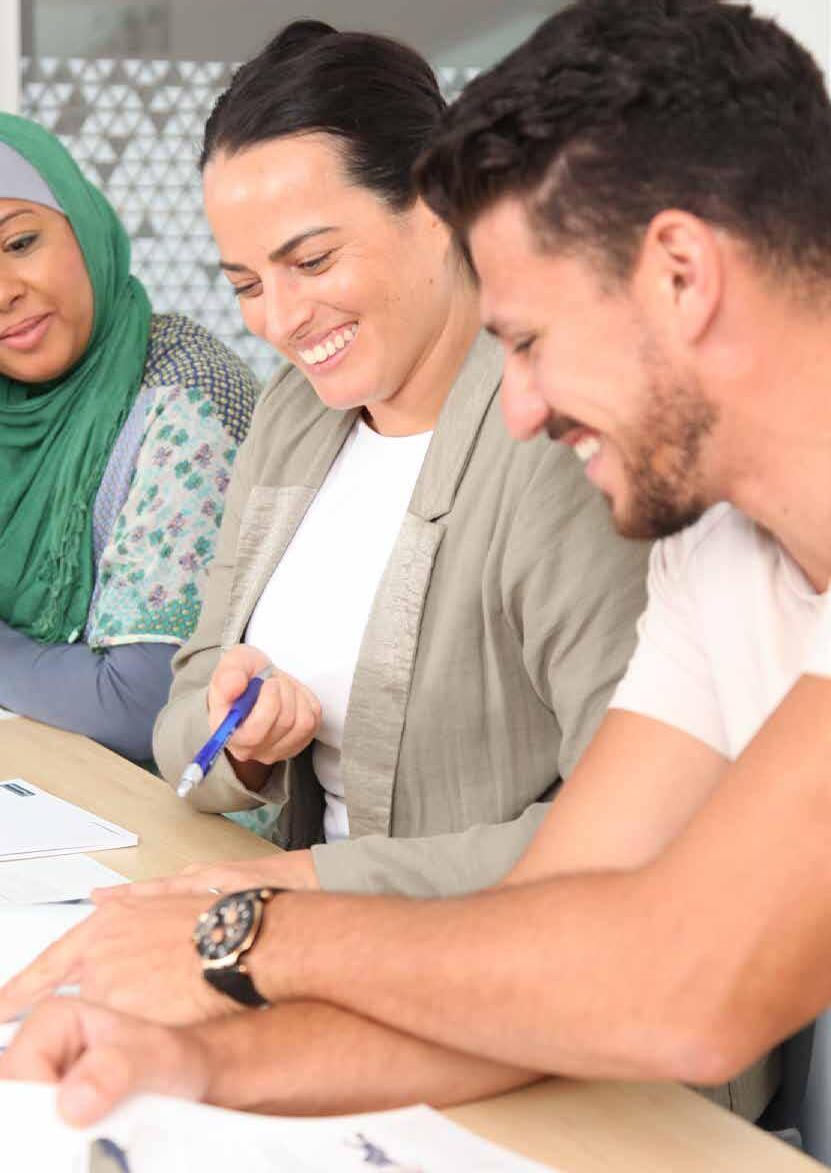
Royal Life Saving’s Keep Watch campaign continues to remind parents and carers of the serious risks of child drowning.
The Keep Watch campaign aims to prevent drowning among children aged 0-4 by encouraging parents and carers to follow four simple actions:
Supervise: Actively supervise children around water.
Restrict: Restrict children’s access to water.
Teach: Teach children basic water safety skills.
Respond: Learn how to respond in case of an emergency.
By promoting these actions, the campaign seeks to significantly reduce the risk of drowning among young children and create safer environments for families.
Between 2014 and 2024, 197 children aged 0-4 years drowned in Australia. Most deaths occurred in a swimming pool (46%) or bathtub (19%), with 82% of swimming pool drownings happening when a child was not being directly supervised.
The risk is highest in summer, when 37% of all young child drownings occur. Tragically, many incidents happen during social gatherings when supervision lapses - often because one adult assumes another is watching the children.
Royal Life Saving CEO Dr Justin Scarr urged parents to remain vigilant: “A momentary lapse of supervision can be a matter of life and death. Always keep watch, check your pool fence and gate are in working order, and never leave the gate propped open.”
“The campaign is supported by community service announcements, social media, and web resources reminding parents that “Kids can’t help themselves around water - you need to. Keep Watch.”

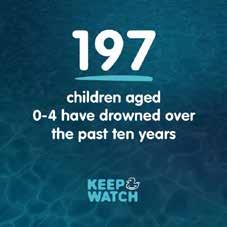

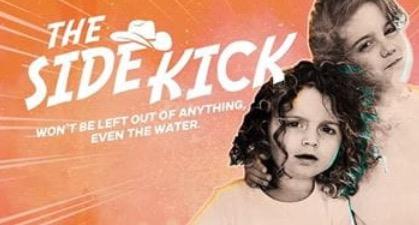


Royal Life Saving’s Make the Right Call campaign challenges men to look out for their mates and make safer choices around water.
Targeting men aged 25-45, the campaign promotes a commonsense approachencouraging men to:
Avoid alcohol around water.
Wear a lifejacket when on the water.
Avoid going alone around water.
AUDIENCE REACH
With men accounting for more than 80% of drowning deaths in Australia, the campaign tackles one of the nation’s most persistent water safety challenges: risk-taking and overconfidence.
Over the past decade, 2,237 men have drowned - an average of 220 fathers, sons, brothers, and friends each year.
Royal Life Saving’s Chief Executive Officer Dr Justin Scarr reinforced the message: “We know that young men often overestimate their skills and ability around water, and underestimate the dangers of hazards like currents, water depth and changes in conditions, which can be heightened with alcohol and influence from peers.”
The risk is greatest in inland waterways, where 41% of drownings among men aged 25–34 occur at rivers, creeks, and lakes.
Among men aged 35–44, beaches account for 26% of all drowning deaths.
Alcohol remains a major contributing factor, particularly among younger men, with 34% of drowning incidents in the 25–34 age group involving alcohol.
The campaign was amplified across television, radio, digital, and social media - reinforcing a powerful reminder: “Make the Right Callto keep your mates safe.”


7+ MILLION PEOPLE Visit: royallifesaving.com.au/maketherightcall

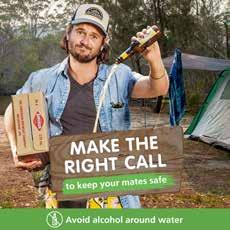
Royal Life Saving’s Everyone Enjoy the Water Safely campaign complemented existing national water safety initiatives, encouraging Australians to prepare before heading out over the summerhelping families, friends, and communities make safer choices around water.
The campaign targeted adults aged 25 to 65, particularly in regional and high-risk areas, reinforcing a simple message: drowning prevention starts with you.
With 41% of all drowning deaths occurring during summer, the campaign launched alongside a national safety warning after the previous summer saw 134 lives lost - an average of one drowning every day.
Royal Life Saving CEO Dr Justin Scarr reminded Australians that preparation saves lives:
“Many families plan their holidays around the waterbut we’re urging everyone to also plan for safety. The choices you make before you leave can save lives.”
Older adults and people born overseas remained key at-risk groups, accounting for 39% and 27% of summer drowning deaths respectively.
Reaching more than 8 million Australians through television, radio, social media, and digital platforms, the campaign inspired individuals and families to take simple, practical actions to ensure every day around the water ends safely.


It urged everyone, regardless of age, background, or swimming ability, to take commonsense steps to stay safe:
Don’t overestimate your swimming abilities.
Decide who will be actively supervising children around water.
Avoid alcohol while swimming, boating, or supervising others.
Check the weather forecast and be prepared to change your plans.
Always wear a lifejacket when boating, fishing and kayaking.
Never go alone. Always plan to swim, boat, paddle or fish with someone else.
Swim at a patrolled beach between the red and yellow flags.
Drowning prevention starts with you. Prepare before you leave home.

Now in its fourth year, Royal Life Saving’s Make Safe Decisions Around Water campaign focuses on keeping communities safe when swimming, fishing, and boating, promoting vital water safety messages among multicultural communities across Australia.
The campaign aims to reduce drowning by encouraging simple, life-saving actions when enjoying the water:
Never go alone in the water - always have a buddy. Always wear a lifejacket when boating, fishing, or paddling.
Don’t drink alcohol when you go swimming, boating, or fishing.
Supervise children closely around all water, including pools, rivers, and beaches.
Learn to swim and learn how to stay safe in and around water.
Royal Life Saving works closely with community leaders, advisors, and agencies to ensure these messages are culturally appropriate, accessible, and relevant. Campaign resources are available in more than 20 languages, including Arabic, Mandarin, Hindi, Vietnamese, Greek, and Swahili, with audio and visual materials distributed through ethnic radio, print, television, social media, and community networks.
Tragically, the last summer holiday period saw a devastating number of drowning deaths among multicultural communities, with migrants accounting for 39% of all drowning deaths between Christmas and New Year. The campaign’s focus on preparedness and prevention directly supports the Australian Water Safety Strategy 2030 priority to reduce drowning among multicultural communities.
“Drowning can happen to anyone, regardless of swimming ability. We’re working with community leaders to ensure messages are delivered inlanguage and in-culture - so it can save lives.”
Stacey Pidgeon, National Manager Research and Policy.
By working hand-in-hand with communities, Royal Life Saving is helping ensure that everyone - no matter their background - can enjoy Australia’s waterways safely.



On 25 July 2025, communities across Australia joined the global movement to mark World Drowning Prevention Day, honouring lives lost and celebrating collective action to prevent drowning.
The United Nations first proclaimed World Drowning Prevention Day in 2021, recognising the devastating toll of drowning - a leading cause of injury-related death worldwide, claiming more than 300,000 lives every year. Vulnerable communities and children remain most at risk, with over 90% of global drowning deaths occurring in low- and middle-income countries.
In Australia, hundreds of families are impacted each year. World Drowning Prevention Day aims to raise awareness of the importance of drowning prevention and to reduce preventable deaths.
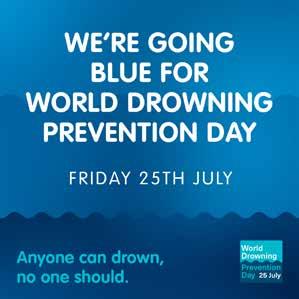
A Nationwide Wave of Blue
Across the country, individuals and organisations united in extraordinary ways:
• Landmarks and buildings lit up in blue, symbolising solidarity with the global campaign.
• Aquatic centres, swim schools and community groups hosted local events and shared safety messages
• Australians wore blue, shared personal stories, and spread life-saving advice across social media.
• Belgravia Leisure led a major activation, with over 70 aquatic centres participating nationwide.
“World Drowning Prevention Day is both a moment of remembrance and a call to action. It’s about honouring lives lost while inspiring every one of us to play a part in keeping our communities safe around water.” Monique Sharp, National Manager Marketing and Events, Royal Life Saving Australia.
National Water Safety Summit: Going Blue for Change
The National Water Safety Summit 2025 coincided with World Drowning Prevention Day, bringing together more than 240 experts, leaders and advocates from across Australia and the world. Delegates joined the global call to “Go Blue,” lighting the room - and the movement - with a renewed commitment to halving drowning deaths by 2030.
Together, these efforts reflect the growing strength of a community united in purpose - to raise awareness, share stories, and take action so that fewer lives are lost to drowning, in Australia and around the world. Uniting Communities, Sharing Stories, and Shining a Light on Prevention





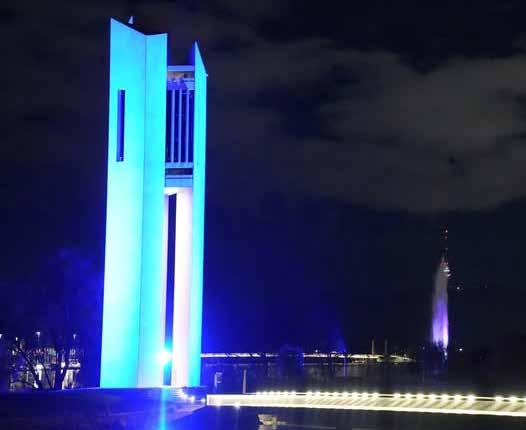




WEBSITE USERS

15,299,585
SOCIAL MEDIA IMPRESSIONS



90,988
SOCIAL MEDIA ENGAGEMENT





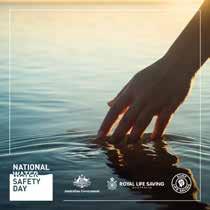
Royal Life Saving Australia’s research revealed alarming declines in children’s swimming and water safety skills, with half of Year 6 students unable to meet national benchmarks. This alarming trend continues into high school, putting thousands at increased risk of drowning in early adulthood.
Key Findings:
Primary-aged students are struggling to meet benchmarks. Teachers estimate that 48% of Year 6 students cannot swim 50 metres and tread water for two minutes. Parents report similar concerns, with 46% of 11-12-year-olds falling short of this standard.
Swimming skills don’t improve in high school. Teachers estimate that 39% of Year 10 students still cannot meet the Year 6 benchmark
Lifesaving skills of high school students are dangerously weak. Teachers estimate a staggering 84% of 15-16-year-olds are unable to swim 400 metres and tread water for five minutes, a basic lifesaving requirement and the benchmark for 17-year-olds.
These findings follow a tragic summer where drownings were up 5% from last summer and 14% above the fiveyear average. A lack of swimming skills was a significant factor in many cases, highlighting the urgent need to reengage children in swimming and lifesaving education.
School Programs Under Pressure
The research revealed that 31% of schools do not offer learn-to-swim programs, citing cost, staffing shortages and time pressures as major barriers. Parents play a crucial role in filling the gap, but one in ten children aged 5–14 have never attended lessons.
While most children start lessons early, many stop between ages 7 and 9, long before they develop vital survival and rescue skills.



What Australians Are Saying
Public response to the research was overwhelming, sparking thousands of comments and discussions online.
Across social media, a strong consensus emerged:
• Swimming is not just a sportit’s a survival skill. Many believe swimming and water safety education should be embedded in the school curriculum to ensure all children learn to swim, regardless of background.
• Cost is a critical barrier. Families reported that rising lesson fees, transport costs and pool access make swimming lessons unaffordable. Many called for free or heavily subsidised programs nationwide.
• Equity and access matter. Parents and educators agreed that the decline in school programs disproportionately affects regional and low-income families, reinforcing calls for a nationally coordinated response.
Royal Life Saving Australia CEO Dr Justin Scarr said the findings highlight a growing national concern: “It’s alarming to see so many children missing out. We risk creating a generation with extremely poor swimming skills. Coordinated investment is needed to boost the swimming and lifesaving skills of children and young people, especially those aged 10–14 years who can’t yet swim 50 metres - before it’s too late.”
Royal Life Saving Australia is calling for four urgent measures to ensure no child misses out on learning to swim:
1. Increase funding for existing school and vacation swimming and water safety programs.
2. Increase grants targeting people with vulnerabilities to drowning, including those from refugee, migrant, regional and Aboriginal and Torres Strait Islander communities.
3. Increase access to lifesaving programs to boost water safety skills and teach resilience in high schools.
4. Address infrastructure gaps, by investing in more public swimming pools and schools.

TO VIEW THE REPORT AND ITS FINDINGS VISIT: royallifesaving.com.au/ ChildrensWaterSafety SkillsReport2025

Swimming and water safety skills are fundamental for every Australian - unlocking a lifetime of safe aquatic recreation, physical activity and wellbeing, while protecting individuals from drowning. Yet despite decades of advocacy, research and investment, many children still fall short of national benchmarks for swimming and water safety.
In response to growing concern, Royal Life Saving Australia convened the National Swimming and Water Safety Education Roundtable in Brisbane on 4–5 June 2025. The event brought together representatives from government, education, academia, aquatic facilities, swim schools, sporting organisations, other peak bodies and community water safety providers.
The Roundtable provided a national platform to:
• Address disparities in access to swimming lessons.
• Examine the ongoing impact of missed lessons during COVID-19.
• Review current government programs and subsidies for school and vacation swimming.
• Strengthen youth engagement and the role of lifesaving in high schools.
• Explore career pathways within aquatic recreation and the broader workforce.
• Revisit earlier symposium recommendations and align national actions.
These discussions were driven by a shared goal - to ensure that no child or young person misses out on learning to swim and developing water safety skills for life.
As a key outcome, participants endorsed a National Plan for Increasing Swimming and Water Safety for All, built around six priority actions:
1. Ensure no child or adult misses out on learning to swim.
2. Increase retention in lessons beyond age seven.
3. Focus on youth - supporting the “COVID generation” to regain lost skills.
4. Boost government funding for school, community and vacation programs.
5. Embed national benchmarks and the National Swimming and Water Safety Framework across all programs.
6. Advocate for pool infrastructure and workforce sustainability.
The outcomes of the Roundtable will inform the next phase of research, collaboration and advocacy. An updated National Swimming and Water Safety Education Action Plan will guide future investment and support practical strategies to increase participation, strengthen delivery and improve outcomes across Australia.


READ THE SUMMARY REPORT: royallifesaving.com.au/ RoundtableSummaryReport

For over four decades, Royal Life Saving’s Swim and Survive program has been a cornerstone of water safety education in Australia - helping people of all ages gain the skills and confidence to enjoy the water safely.
Reaching more than 375,000 participants last year across over 400 partner organisations, the program continues to play a vital role in reducing drowning and promoting active, healthy lifestyles around water.
Designed for everyone - from six months old through to adults - Swim and Survive offers a progressive learning pathway that builds essential swimming and water safety skills for life.
Aligned with the National Swimming and Water Safety Framework, Swim and Survive enables participants to reach National Benchmarks at key target ages. This comprehensive curriculum guides learners through a series of progressive steps, building from fundamental skills to more advanced techniques that challenge endurance and complexity.
Inclusive, Accessible, and Research-Driven
Swim and Survive is grounded in research and designed to be inclusive and adaptable, ensuring that everyone - regardless of age, ability, or background - can learn to be safe and confident around water.
The program’s engaging, skill-based approach ensures participants not only learn to swim but also understand how to prevent drowning, make safe decisions, and assist others in need.
“Swim and Survive remains one of Australia’s most trusted and inclusive pathways to lifelong water safety. It’s not just about swimming - it’s about empowering every person with the skills to enjoy the water safely and responsibly.”
Penny Larsen, National Manager Education, Royal Life Saving Australia
377,811
PARTICIPANTS
434,737 AWARDS
380+
PARTNERS

The Water Smart program aims to equip every child in Australia with essential ‘Water Smart’ skills, ensuring lifelong safety and enjoyment in aquatic sports and recreation. This classroom-based resource, designed for teachers and schools, includes the Water Smart Education Toolkit and the Water Smart Award Guide.
Water Smart Toolkit
The toolkit offers curriculum materials for all year levels, from Foundation to Year 10, and is available for download. These resources include:
• Units of work
• Teachers’ notes
• Activity sheets
• Safety tip sheets
• Supplementary resources
Water Smart Award Guide
A fun and practical water safety award that is easy for teachers to deliver in the classroom or playground. This guide, designed for students in Years 4, 5, and 6, provides step-by-step instructions for teachers and includes an achievement certificate. Key topics covered include:
• Dangers around aquatic environments and safe behaviours
• Reach and throw rescue techniques
• Basic resuscitation principles
Access to Water Smart Resources
The Water Smart Resources and Education Toolkit are available free of charge. Teachers can download the resources in PDF or interactive whiteboard format to teach a comprehensive unit on water safety.
5,484
SCHOOLS/TEACHERS REGISTERED

Royal Life Saving Australia and Swimming Australia Forge Partnership
Advancing Water Safety and Swimming Participation Nationwide
Royal Life Saving Australia and Swimming Australia have signed a Memorandum of Understanding to unite their expertise and resources in a partnership aimed at eliminating drowning and empowering all Australians to be safe and active around water.
The partnership formalises a national commitment to:
Reduce barriers and promote access to swimming for all Australians, regardless of background.
Improve access to sustainable aquatic infrastructure so communities’ nationwide benefit from quality aquatic facilities.
Ensure all Australian children meet or exceed national swimming and water safety benchmarks.
Promote lifelong pathways from learning to swim through to recreational and competitive swimming.
Dr Justin Scarr, Chief Executive Officer of Royal Life Saving Australia, said: “Drowning is preventable, and being able to swim is a human right. By partnering with Swimming Australia, we are strengthening our ability to empower communities, foster inclusion, and ensure every Australian can enjoy the water safely. Together, we can make a lasting impact on water safety and build healthier, more connected communities.”
Rob Woodhouse, Chief Executive Officer of Swimming Australia, added: “Swimming is at the heart of Australia’s identity. This partnership with Royal Life Saving Australia allows us to align our efforts, from grassroots learnto-swim programs to elite sport, ensuring that every Australian child can be safe and confident in the water. By working together, we are creating stronger pathways and advocating for the vital role swimming plays in our nation’s health and wellbeing.
A Unified Voice for Water Safety
Through this partnership, Royal Life Saving Australia and Swimming Australia will present a unified voice to decision-makers and the public - leveraging their combined expertise to influence policy, guide investment, and strengthen swimming participation and water safety outcomes nationwide.
Below: Dr Justin Scarr, CEO, Royal Life Saving Australia and Rob Woodhouse, CEO, Swimming Australia.

Royal Life Saving Australia is proud to have been selected as an Affiliate of Play WellAustralia’s Sport Participation Strategy, led by the Australian Sports Commission (ASC).
Play Well is a national initiative designed to create a connected and collaborative sport and recreation sector, ensuring that everyone has a place in sport. As an Affiliate, Royal Life Saving joins a growing network of organisations committed to delivering safe, welcoming, inclusive and fun sporting experiences for all Australians.
“We’re proud to be involved with Play Well and to play a meaningful role in supporting active, healthy communities. Through this partnership, we’ll help ensure no child or adult misses out on the skills needed to enjoy the water safely and on access to great local pools that bring people together.” Dr Justin Scarr, Chief Executive Officer, Royal Life Saving Australia
A Shared Vision for Inclusion and Participation
As part of the Play Well Affiliate Program, Royal Life Saving Australia will: Align programs and activities to the Play Well objectives of inclusion, safety and connection.
Contribute to the implementation of the national participation strategy alongside sport and recreation partners. Support communities to enjoy positive, accessible and sustainable aquatic experiences.
The partnership strengthens Royal Life Saving’s commitment to creating opportunities for lifelong participation, reinforcing that swimming, water safety and aquatic recreation are central to both community wellbeing and Australia’s sporting culture.
“These sport and recreation organisations are aligned with our mission to create safe, welcoming, inclusive and fun sporting experiences and will help us deliver on our Horizon One outcomes.” Richard McInnes, Executive General Manager, Sport and Community Capability, ASC

LEARN MORE PLAY WELL – AUSTRALIA’S SPORT PARTICIPATION STRATEGY https://www.ausport.gov.au/ playwell/strategy
Royal Life Saving Australia offers extensive training opportunities, both online and in-person, to support individuals in building lifesaving skills for community safety or a professional career in aquatic safety. Since 1894, we have trained people to be lifesavers, adapting our programs to meet the needs of diverse workplaces and communities today.
Training programs include: First Aid, Cardiopulmonary Resuscitation (CPR), Pool Lifeguard, Bronze Medallion and Swim Teaching.
We offer a suite of professional development courses tailored for the aquatic industry, designed to help participants advance their careers. Courses include: Supervision Planning, Lifeguard Advanced Supervision Skills, Teacher of Lifesaving, Conflict Management, Swim Teaching for Participants on the Autism Spectrum, Cultural Competence, Child Safety and Communication Skills.
The Committee supported initiatives through strategic oversight, collaboration and resource development. In 2024–25, these included:
• Committee Engagement: Met bi-monthly to foster information exchange, collaboration and problem-solving across states and territories.
• Training Resource Development: Launched the updated Lifeguarding Manual – 6th Edition, strengthening pool lifeguard practice and supervision standards nationally. Coordinated the development of multiple training resources, including Strengthening Child Safety Across the Aquatic Industry – Management Level Model.
• RTO Compliance Activities: Conducted assessment validation and aXcelerate system workshops to ensure regulatory compliance and quality training delivery.
• Promotion and Recruitment: Led national promotion of aquatic careers, highlighting training pathways for lifeguards, swim teachers and aquatic managers to attract and retain a strong workforce.
Visit: royallifesaving.com.au/training-development
Training Awards Issued
63,316 RESUSCITATION
29,330 FIRST AID
22,421 POOL LIFEGUARD
7,575 SWIM TEACHER
6,111 PROFESSIONAL DEVELOPMENT
5,748 BRONZE MEDALLION (VET)

New Sixth Edition of the Royal Life Saving Lifeguarding Manual Released
Royal Life Saving Australia have released the Sixth Edition of its flagship Lifeguarding Manual, providing updated guidance and enhanced technical content to strengthen pool lifeguard practice and supervision standards across Australia’s aquatic facilities.
The updated edition reflects learnings from recent drowning incidents, coronial recommendations, and safety assessments, as well as the integration of emerging drowning detection technologies now in use at many aquatic centres.
The new edition includes a range of improvements designed to enhance vigilance, strengthen practice, and support facility management:
Enhanced scanning strategies
Updated guidance on techniques to maximise coverage and concentration, including eye movements, roving patrols, posture, and managing fatigue, distractions, rotations and breaks.
Visibility and environmental factors
New content on identifying and overcoming visibility barriers such as glare, reflection and water turbidity.
Lifeguard-assisted technologies
Guidance on the integration of camera-based drowning detection systems within supervision plans, communication protocols and rescue procedures.
Expanded rescue procedures
Updated, step-by-step instructions for wade rescues, accompanied rescues, and patient immobilisation.
Evidence-based practice
Refreshed data and visuals on public pool drowning deaths and incidents.
Fitness and competency clarity
Updated physical requirements and clearer details on the nationally recognised RLSSA Pool Lifeguard Award skill set.
Supporting Lifeguards and Facility Managers
Royal Life Saving National Manager – Training and Workforce Development, Shaun Jackson, said the new edition reflects the latest research and best-practice guidance for Australia’s professional pool lifeguards. “Pool lifeguarding is a demanding role that requires sustained concentration,” said Mr Jackson.
“This updated guidance assists lifeguards and aquatic facility managers to apply best-practice techniques in scanning, managing fatigue and visibility barriers, and integrating new technologies safely and effectively.” He added that the Lifeguarding Manual, alongside the Guidelines for Safe Pool Operations (GSPO), remains a vital resource in supporting the Australian Water Safety Strategy 2030 - particularly its focus on research, supervision and workforce excellence.
Access and Implementation
The updated Lifeguarding Manual (Sixth Edition) is now available in both print and digital eBook formats.
Royal Life Saving encourages trainers, aquatic facility managers, lifeguards, and operations staff to review the latest edition and ensure their local training practices and supervision policies reflect the updated guidance.



Royal Life Saving Australia has released an updated version of its industry-recognised Child Safeguarding for the Aquatic Industry – Management Level module, developed specifically for leaders and managers across the aquatic sector.
The revised module introduces new content areas to support best practice and strengthen risk management for child safety in three key areas:
• Delivery of education and training courses (Community and VET)
• Aquatic sporting activities
• Child safe recruitment practices
Reflecting the unique challenges faced by aquatic professionals, the course continues to use industry-contextualised scenarios and highly engaging, interactive learning experiences to enhance relevance and practical application.
The new section on training and education is tailored to aquatic and first aid delivery contexts. It addresses critical considerations including physical contact, supervision expectations, age disparities, social media use, and how to manage power imbalances or unprofessional conduct by educators and parents alike.
The recruitment-focused content guides learners through each step of embedding child safety into workforce practices, from role design and advertising through to interviewing, reference checking, induction and ongoing development.
These updates ensure that managers and supervisors are equipped with the knowledge and tools to create safe, inclusive and supportive environments for children and young people across all aquatic settings. New


LEARN MORE
https://www.royallifesaving.com.au/ ChildSafety
Australian-qualified pool lifeguards now have streamlined opportunities to work in the UK, Canada and South Africa, thanks to the RLSS Commonwealth Pool Lifeguard Reciprocity Project.
The project - developed collaboratively by Royal Life Saving member organisations across these countries - maps the similarities and differences between training programs, creating a clear pathway for lifeguards to gain local certification and start work overseas.
The initiative also establishes recognition-ofprior-learning processes for lifeguards entering Australia, ensuring high standards and consistent safety practices worldwide.
By removing unnecessary barriers and promoting shared standards, the project strengthens international collaboration and supports skilled lifeguards to share their expertise across borders.
Shaun Jackson, National Manager – Training and Workforce Development at Royal Life Saving Australia, said, “We know that pool lifeguards are in high demand over the summer months in the UK, Canada and South Africa and the program will allow Australian qualified pool lifeguards to have a clear idea of the specific and tailored training required in each of these countries before they set off.”

Lifesaving sport transforms essential rescue skills into teamwork, discipline and confidence - connecting people through a shared purpose to stay active, build capability and save lives.Through training, competition and international representation, Royal Life Saving Australia provides pathways for young people to develop leadership, resilience and lifelong water safety skills.
More than 250 athletes from across the country converged on the Sydney Olympic Park Aquatic Centre from 16–18 January 2025 for the Australian Pool Lifesaving Championships testing their speed, strength, and lifesaving skills across junior, open, and masters’ divisions.
Western Australia claimed backto-back victories, taking out the Sir Percy Joske Trophy for the Interstate Overall Championship, followed closely by Victoria and New South Wales.
Jemma Holt (Victoria) and Brayden Woodford (New South Wales) were named Female and Male Lifesavers of the Meet respectively.
Jemma was also the winner of the Women’s Under 19 Individual Overall Championship - the George Turnbull Trophy and the Women’s Under 19 Australia Cup - The Shayne Baker Trophy (U19 Female Superlifesaver).
Brayden was also the winner of the Men’s Under 19 Individual Overall Championship - Drager NSW Branch Trophy and the Men’s Under 19 Australia Cup - John Stacpoole Memorial Trophy (U19 Male Superlifesaver).
The CPR Competition, sponsored by Laerdal, again showcased athletes’ proficiency in performing effective resuscitation using QCPR technology. Victoria took top honours winning the Laerdal Overall Team Trophy, with The Hills (NSW) recognised with the Encouragement Award.
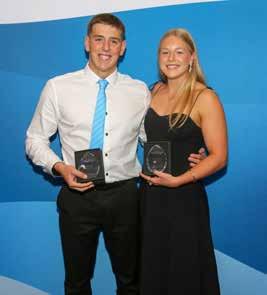
Other highlights included:
Interstate Men’s Overall Championship
Western Australia
Interstate Women’s Overall Championship
Victoria
Open SERC Team
Queensland
Interclub Championship
Sunshine Coast Grammar
Pool Lifesaving Club
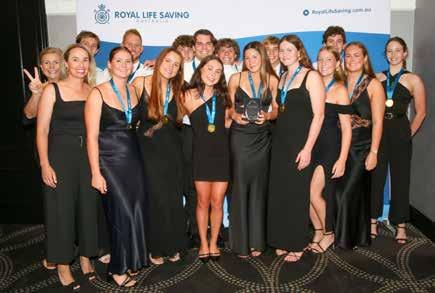

Key Officials (pictured above)
Chief Referee: Joanne Teagle
CPR Co-ordinator: Mary Collins
SERC Co-ordinator: Brione Rundle
Equipment Co-ordinator: Brendan Watts
Officials
Royal Life Saving extends heartfelt thanks to the dedicated volunteers and officials whose commitment ensures the ongoing success of this national event. Catherine McGrath was named Official of the Meet (pictured top right), reflecting the spirit of teamwork and camaraderie that defines the Championships.
“There are so many wonderful people who volunteer year after year. APLSC is a great vibe - it’s like a family gathering.”
Catherine McGrath, Official of the Meet



Supported by Sport Australia and in partnership with Surf Life Saving Australia, the Australian Lifesaving Team is the high-performance pathway for lifesaving sport in Australia.
The Australian Lifesaving Team is comprised of three squads - Youth, Pathway and Open, with top-performing athletes in each discipline (pool, open water/craft and beach) selected to contest the biennial World Lifesaving Championships and other national team competitions within the two-year Lifesaving World Championship campaign.
At the 2025 Royal Life Saving Society Commonwealth Lifesaving Championships in Swansea, Wales, Australia once again demonstrated world-class skill and sportsmanship.
The Australian Development Team finished 2nd overall, while the National Team secured 3rd place, underscoring the depth of talent, teamwork, and dedication across both squads.
Among the standout performers were Chelsea Jones, who claimed the Overall Individual Point Score and set a new Commonwealth record in the Women’s Rescue Medley, and Brayden Woodford, who earned the men’s equivalent title. Heath Corry also broke the 100m Manikin Carry record twice in one day, with many teammates achieving personal best times throughout the competition.
Beyond the medal count, the Championships celebrated the spirit of lifesaving sportleadership, resilience, and international camaraderie. The Australian team proudly led the Commonwealth Development Workshop, sharing knowledge and building connections with athletes from around the world.
“These athletes gave everything - in training, in competition, and in the way they represented Australia off the pool deck. None of it would have been possible without the dedication of our coaches, managers, and officials.”
Brooke Cherfils, National Manager – Lifesaving Development
Royal Life Saving Australia congratulates every athlete, coach, and official on their outstanding achievements and contributions to the global lifesaving movement.
National Team
Chelsea Jones (Captain)
Jemma Holt
Jessica Oates
Madison Jones
Paige Holt
Daniel Miller (Captain)
Brayden Woodford
Heath Corry
Nicholas Hodgers
Oscar Starr-Thomas
Development Team
Bella Murchie
Eleanor Flowers
Milla Clark
Reagan Copsey
Stephanie Staniforth
Billy Love
Corbin Zahn
Jackson Brennan
James McGrath
Mitchell Tuckey
Management Team
National Team Coach
Rebecca Hartman
Development Team Coach
Ethan Garland
Team Manager
Jennifer Jones
Assistant Team Manager
Robert Dale
RLSSA Delegate
Brooke Cherfils
Officials Director for Commonwealth Lifesaving Championships
Anne-Maree Gardiner AM
Chief Referee
Joanne Teagle
WET SERC Referee
Roz Grey OAM
Dr Shayne Baker OAM
Jaclyn Baxter
Jeannie Baxter-Reid
Sue Baxter-Winch
Mary Collins
Maree Emery
Penny Hodgers
Cath Hynd
Nicole Krite
Rob Reid
Tony Seals
John Winch

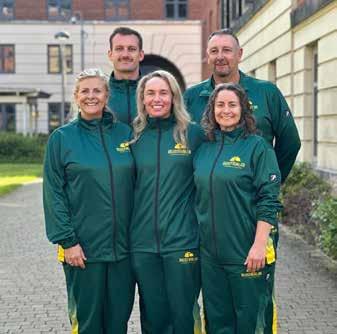




KEY ACHIEVEMENTS
1,220 facilities maintained active subscriptions to the Guidelines for Safe Pool Operation.
969 Aquatic Safety Partner Facilities.
828 Safety / Risk Assessments completed. Advanced aquatic safety and sustainability through the National Aquatic Industry Committee (NAIC).
Marked 35 years of the Guidelines for Safe Pool Operations (GSPO) and 30 years of the Aquatic Facility Safety Assessment (AFSA).
Convened the National Aquatic Infrastructure Symposium 2025.
Released the State of Aquatic Facilities 2025 Report.
Delivered the National Aquatic Industry Workforce Report 2025.
Released the Exploring Diversity, Equity and Inclusion in the Aquatic and Leisure Industry Report.
Launched the Keep Your Cool at the Pool campaign to address occupational violence.
Facilitated the Aquatic and Leisure Management Stream at the National Sports and Physical Activity Convention 2025.
Partnered with Lynxight to showcase AI-powered drowning prevention technology.
Supported development of Local Water Safety Plans.
Maintained Inland Waterway Guidelines to inform access and risk management practices.
Expanded Respect the River initiatives across regional, remote and inland communities.



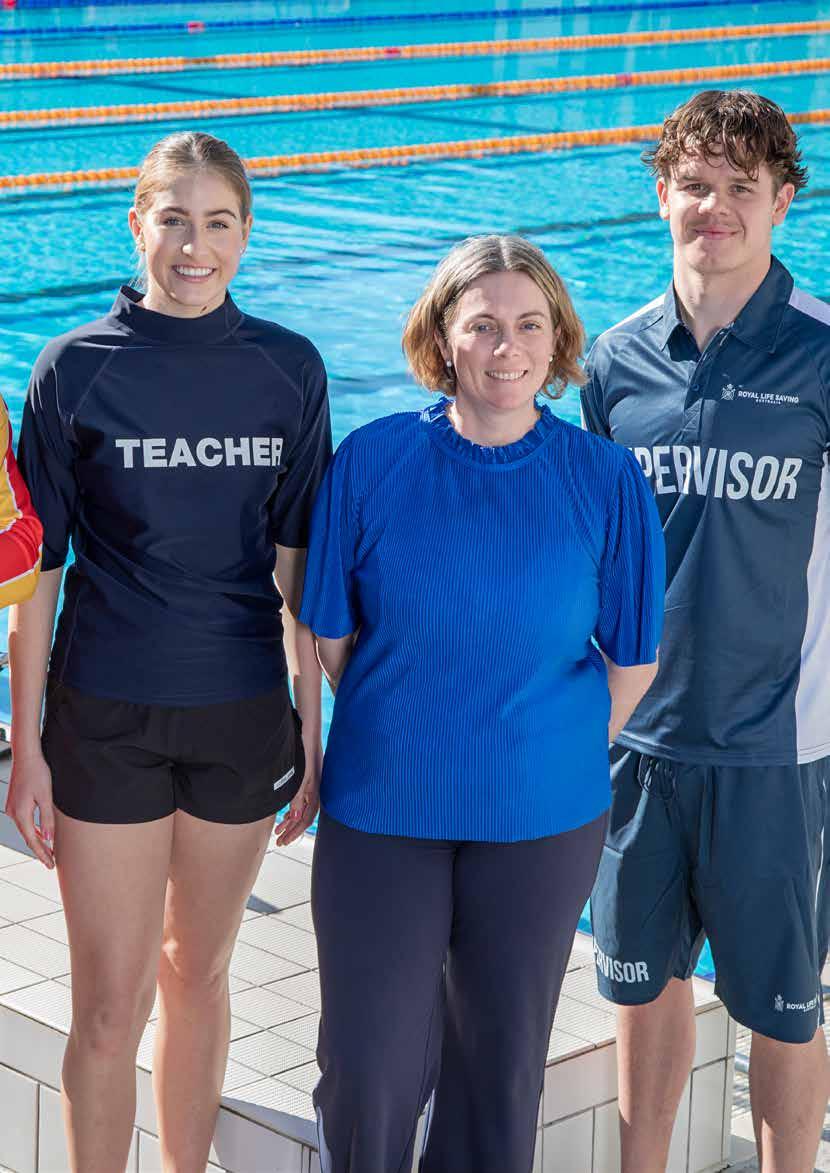
Royal Life Saving’s Aquatic Risk teams played a pivotal role in promoting best practice and driving improvements in aquatic risk management and safety with:
Routine Safety Assessments
Encouraging facilities to conduct regular assessments to benchmark safety practices against national standards.
Design Phase Assessments
Advocating for safety assessments during the planning and design of new facilities.
Child Supervision Programs
Expanding child supervision initiatives at public and communal pools.
1,220
SUBSCRIBERS TO THE GUIDELINES FOR SAFE POOL OPERATIONS
969
AQUATIC SAFETY PARTNER FACILITIES
828
SAFETY / RISK ASSESSMENTS COMPLETED
Guidelines for Safe Pool Operations
The Guidelines for Safe Pool Operations (GSPO) continued to serve as the national industry standard, offering essential guidance on the safe design, ownership and operation of aquatic facilities. The NAIC authorised improved guidance for safe diving and use of non-traditional first aid and rescue equipment – strengthening risk management practices. This year, 1,220 facilities maintained active subscriptions, reinforcing their commitment to upholding safety excellence.
Aquatic Facility Safety Assessments
The Aquatic Facility Safety Assessments (AFSA) program remains a cornerstone of our risk management strategy, providing comprehensive evaluations of facility safety and compliance and enabling industry-wide benchmarking of safety standards’ implementation.
Safety Assessments Conducted:
• Public Pools: 336
• Commercial Swim Schools: 2
• Communal Pools (hotels, resorts, apartments): 26
• Mystery Guest Visit Assessments: 394
• Inland Waterway Safety Assessments: 70
Aquatic Facility Safety Endorsements
Royal Life Saving recognises facilities that excel in safety and risk management through its various program endorsements. These endorsements are widely regarded as a hallmark of safety excellence within the aquatic industry:
• 5 Star Pools (NSW/ACT/TAS): 81
• Platinum Pools (VIC/QLD): 52
• Gold Pools (VIC/QLD/SA): 90
• Silver Pools (VIC/QLD/SA): 34
• Bronze Pools (VIC/QLD/SA): 27
• Keep Watch @ Public Pools Partners (NT/QLD/NSW/TAS): 150
• Watch Around Water Partners (VIC/WA): 367
Aquatic Risk Committee
The Aquatic Risk Committee supported initiatives through strategic oversight and policy development.
In 2024–25, Royal Life Saving strengthened reporting outcomes against the Guidelines for Safe Pool Operations and streamlined, updated and enhanced the National Aquatic Safety Assessment System and question sets to align with updated standards and guidelines.
“The rise in GSPO and AFSA participation shows that safety is at the heart of our industry - but sustained progress depends on more facilities completing AFSAs and feeding into the national aquatic safety system.” Marty Moran, National Manager Industry Safety, Royal Life Saving Australia.
The National Aquatic Industry Committee (NAIC) has been instrumental in advancing key initiatives to support the health, safety and sustainability of aquatic facilities across Australia throughout 2024-25.
Through its collaborative efforts, the NAIC plays a vital role in shaping the future of aquatic facility management, safety protocols and workforce development within the aquatic sector.
In 2024–25, the National Aquatic Industry Committee advanced safety and inclusion by strengthening guidance on safe diving practices, introducing novel first aid and emergency equipment, developing inclusion strategies, and progressing the National Aquatic Infrastructure Framework.
National Aquatic Industry Committee
RJ Houston (Chair)
Royal Life Saving Australia
Matthew Simpson
Swimming Australia
Georgie Nichol
Australian Council for Swimming and Water Safety Teachers (AUSTSWIM)
Gary Toner
Australian Swim Coaches and Teachers Association (ASCTA)
Luke Daly
Australian Swim Schools Association (ASSA)
Kathy Parton
Aquatics and Recreation Victoria (ARV)
Suellen Goyne
Aquatic Recreation Institute (ARI)
Travis Doye
Leisure Institute of Western Australia Aquatics (LIWA)
Kristin Brookfield
Swimming Pool and Spa Association Australia (SPASA)
Amanda Locke
City of Greater Geelong
Brad Page
Logan City Council
Matt Howes
Sunshine Coast Council
Liam O’Brien
Aligned Leisure
Joel Perricone
BlueFit
Scott Vanderheyden
Belgravia Leisure
Adam Luscombe
The Y
Alek Olszewski
Life Saving Victoria
Nicky Sloan
Royal Life Saving Queensland
Craig Roberts
Royal Life Saving New South Wales
Bec Gawne
Royal Life Saving Northern Territory

For more than three decades, Royal Life Saving Australia has led the development of national safety systems that support the aquatic industry.
The Guidelines for Safe Pool Operations (GSPO), first introduced in 1990, and the Aquatic Facility Safety Assessment (AFSA), launched in 1995, remain cornerstones of Australia’s aquatic safety infrastructure - shaping standards, building capability, and driving a culture of continuous improvement.
In 2024–25, GSPO subscriptions grew by 32% (1,220 subscribers) and the GSPO digital platform recorded 65,000+ page views, reflecting strong industry engagement and demand for trusted, evidence-based guidance.
Over the past 20 years, 87 people have drowned in public pools, an average of four deaths per year, despite significant progress in safety and growing pool visitation. These tragedies, alongside other challenges such as chemical incidents, spinal injuries, and aggression toward staff, highlight the need for strong, coordinated safety systems that evolve with the industry.
Developed originally in Victoria and now adopted nationwide, the GSPO provides a comprehensive suite of industry-authored guidelines covering aquatic supervision, program delivery, facility design, emergency planning, and more.
It is a living document, continually refined through research, regulatory updates and operational insights.
The AFSA complements the GSPO by providing a nationally consistent assessment framework, enabling benchmarking and reporting against agreed safety standards.
Together, they ensure every aquatic facility can measure and improve its safety performance through evidencebased practice.
The GSPO is governed by the National Aquatic Industry Committee (NAIC) - a multi-stakeholder group established to authorise guideline changes, interpret national standards, and drive the development of the National Aquatic Industry Strategy. The NAIC is supported by state-based industry committees, such as the Platinum Pool Steering Committee in Victoria and the Queensland Aquatic Industry Safety Committee, ensuring a robust system of collaboration, feedback and input across jurisdictions.
This governance model ensures broad consultation, transparency, and alignment between industry, government and community stakeholders.
The system operates through the principles of Collective Impact, fostering:
1. A common agenda to eliminate drowning and improve safety.
2. Shared measurement through consistent assessments.
3. Mutually reinforcing activities across training, compliance and communication.
4. Continuous communication via workshops, newsletters and forums.
5. Backbone support from Royal Life Saving Australia.
Community safety is not just a compliance obligation, but a shared responsibility - one that thrives through evidence, partnership and continuous learning.
“The legacy of the GSPO and AFSA is worth celebrating - but their future is equally important. Together, these frameworks ensure that every visit to a public pool is as safe as it is enjoyable.”
RJ Houston, General Manager –Capability & Industry
The National Aquatic Infrastructure Symposium, held in March 2025, brought together more than 100 leaders from government, planning, architecture, design, academia and the aquatic sector.
Facilitated by Royal Life Saving Australia on behalf of the National Aquatic Industry Committee, and supported by key partners and supporters, the twoday event marked a defining moment for the future of aquatic infrastructure across the country. From the very first keynote, the message was clear: the time to act is now.
Opening the Symposium, Dr Justin Scarr, CEO of Royal Life Saving Australia, set the tone with a call for urgent collaboration and long-term vision.
Keynotes and panels from national and international experts - including Darryl Condon (HCMA, Canada), RJ Houston (Royal Life Saving Australia) and Dr William Koon - explored the themes of access, equity, innovation and sustainability in aquatic facility design and management.
Local case studies from communities including Northcote, Wadeye, Katherine, Gunyama, Roma, Palm Beach, Geelong, Carnegie and Fawkner showcased the diversity of needs and opportunities across urban, regional and remote Australia.
Throughout the program, a common question guided discussion: How can we co-design aquatic facilities that are equitable, sustainable, and future-ready?
The answers, echoed in every session and conversation, are simple yet powerful: we must work together, we must shift paradigms and expand our focus towards community wellbeing hubs, plan for the long-term and put community at the centre of our decision-making.
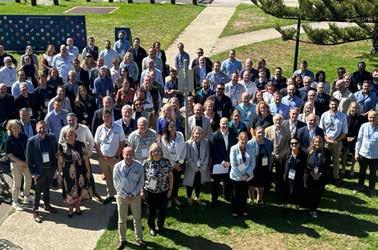
The workshops brought it all together, distilling key insights into actionable insights for a National Aquatic Infrastructure Framework - a bold set of principles and tools that can guide future investment and development to meet the needs of every Australian community.
As we move forward, one message stands out: the future of community pools are at a crossroads - if we continue as-is, many communities will miss out on access to great local community pools, but if we mobilise, collaborate, innovate, and act with urgency to drive upgrades for aging pools and build new pools in growing communities, we can build a legacy of healthier, happier and more resilient communities powered by thriving, accessible and sustainable community pools for generations to come.
Royal Life Saving Australia extends its sincere thanks to the National Aquatic Industry Committee, all presenters, sponsors, and partners, and every participant who contributed to this vital national conversation.
Sponsors: Commercial Aquatics Australia (VIC), Myrtha Pools, Lynxight
Media Partner: Australasian Leisure Management Program Supporters: Warren Green Consulting, Otium Planning Group, IAKS Australia & New Zealand, Smart Connections Consulting / National Sports and Physical Activity Convention, Warren and Mahoney Architects, and LIWA Aquatics
Event Host: Life Saving Victoria
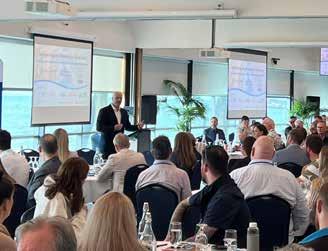
The State of Australian Aquatic Facilities 2025 Report revealed that millions of Australians - particularly those in outer metropolitan, regional and low-cost housing areas - are missing out on the benefits of local public swimming pools.
This landmark research identifies the 50 communities across Australia most disadvantaged by limited pool access, highlighting the vital social, health and safety value that public aquatic facilities deliver, and the urgent need for coordinated national planning to ensure equitable access for all.
With more than 421 million visits each year, public swimming pools generate an estimated $12.84 billion in social value annually, contributing to drowning prevention, physical activity, mental wellbeing and community connection.
Despite their enormous benefits, the report warns that nearly 500 public pools are approaching the end of their operational lifespan, placing significant pressure on local governments and operators to maintain or replace ageing infrastructure.
“Public pools are much-loved, essential community assets that support wellbeing and the Australian approach to drowning prevention,” said Dr Justin Scarr, Chief Executive Officer, Royal Life Saving Australia.
“But for one in four Australians, particularly those in growing communities, there are simply no local options for safe access to swimming, aquatic exercise and water safety education.”
The report establishes new benchmarks for population-to-pool ratios and identifies the types and features of pools best suited to different community profiles - evidence that will assist planners, policymakers and funding bodies to make better investment decisions.
RJ Houston, General Manager – Capability and Industry, said a new approach is urgently needed: “Research shows that pool planning is often ad hoc and politicised, leading to facilities that don’t align with local needs or budgets. By developing a national framework for pool planning and provisioning, we can prioritise long-term community outcomes and ensure every Australian has a fair go when it comes to safe places to swim.”
To address these challenges, Royal Life Saving Australia convened a National Aquatic Infrastructure Symposium in March, bringing together industry leaders, planners and policymakers to inform the development of a National Planning Framework.
This initiative aims to guide investment and ensure that Australia’s network of public aquatic facilities remains safe, sustainable and equitable - supporting the goals of the Australian Water Safety Strategy 2030 and strengthening community wellbeing for generations to come.
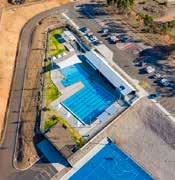

READ THE REPORT AND WATCH THE VIDEO royallifesaving.com.au/ state-of-aquatic-facilityinfrastructure-2025
Aquatic Facilities: Social & Economic Value
421 million visits annually to 2,103 publicly accessible aquatic facilities across Australia
The social value of aquatic facilities has increased to $12.84 billion per year, up from $9.1 billion in 2021, and is inclusive of health, social, and economic benefits
Each visit to an aquatic facility generates $30.50 in economic benefits, reflecting improved health outcomes, reduced healthcare costs, and community engagement
1 in 4 Australians must drive more than 10 minutes to reach a public pool
$6.1 million annual social valueaverage aquatic facility
The national social value of Australian aquatic facilities is $12.8 billion per year

Understanding the size, profile, and future of Australia’s aquatic workforce
Royal Life Saving Australia, with the support of the National Aquatic Industry Committee and State and Territory Member Organisations, released the National Aquatic Industry Workforce Report 2025 – the most comprehensive study to date on the size, profile and future of Australia’s aquatic workforce.
The research draws on:
• Successive national workforce surveys which analysed more than 6,000 responses across every major role in aquatic facilities.
• Workforce modelling using a variety of authoritative sources, including the RLSSA State of Industry Snapshot 2024 and the RLSSA National Aquatic Infrastructure Database.
• Validation against independent datasets, including CERM PI, AUSTSWIM and RLS state / territory annual certification volumes, and AUSactive workforce data.
Aquatic facilities are essential to community lifeproviding safe places to swim, teach lifesaving skills, and promote health, wellbeing and social connection. But to deliver these outcomes, the industry must respond to workforce needs, address safety and retention challenges, and seize the opportunities to upskill workers in response to change and build a more resilient, inclusive, and sustainable workforce.
The report outlines practical pathways for action, including:
• Tackling occupational violence and aggression to make aquatic facilities safe for workers and patrons.
• Investing in consistent leadership development and succession planning.
• Building more secure and sustainable employment pathways.
• Strengthening diversity and inclusion to reflect the communities served.
• Implementing the National Aquatic Workforce Framework to support attraction, retention, and capability across every role.
The National Aquatic Industry Workforce Report 2025 reinforces Royal Life Saving’s commitment to strengthening safety, supporting workers and sustaining the vital role aquatic facilities play across Australia.
Size & Profile:
The aquatic industry employs an estimated 85,000 workers nationwide.
The largest roles are swimming and water safety teachers (33%), lifeguards (20%), and customer service staff (15%).
Women now hold 54% of senior leadership roles.
Issues & Needs:
45% of the workforce is employed casually, 34% work fewer than 15 hours per week.
While the proportion working 32+ hours per week has more than tripled since 2019, this reflects the need for more stable hours to meet financial needs.
Challenges:
Occupational violence and aggression (OVA) is widespread: 90% of workers report experiencing OVA, with 25% experiencing it frequently.
44% feel unsafe at a concerning level, and 18% at an alarming level.
Leadership perceptions are strong, but are uneven, with 57% rating quality as high and 15% as low.
Opportunities:
53% of workers see the aquatic industry as offering good career opportunities, and 51% have long-term career goals within the sector.
Workers identify purpose and community impact as the most rewarding aspects of their roles, reinforcing the power of values-driven attraction and retention strategies.
0.7% Non-binary
0.5% Self-describe
0.8% Prefer not to say
The industry is mostly female There is a significant casual workforce *20% of the Australian workforce considers their job to be casual
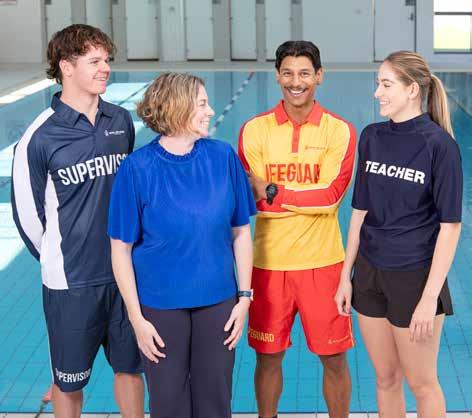



A landmark study led by Swinburne University, in partnership with VicHealth, Royal Life Saving Australia, and AUSTSWIM, has provided the first comprehensive look at diversity, equity and inclusion (DEI) across Australia’s aquatic and leisure industry.
The research explores how DEI is understood, implemented and experienced across aquatic and leisure workplaces and facilitiesidentifying both progress made and the significant work still to be done to ensure that all Australians feel safe, welcome and represented in aquatic environments.
The research draws on:
• A sector-wide survey of over 300 aquatic staff and leaders
• Focus groups with marginalised users and underrepresented groups
• A national analysis of inclusive programs and initiatives
• A review of DEI policies, practices and training
It examines DEI across three domains: workplace culture, customer experiences, and leadership practices.
Key Findings:
Most organisations are in the early stages of DEI maturity, with good intentions but inconsistent practices
DEI activity is heavily weighted toward disability inclusion, with significant gaps in First Nations, LGBTIQA+, and culturally and linguistically diverse (CALD) inclusion
46% of respondents felt confident expressing views on diversity in their workplace
Only 35% reported that their organisation had clear DEI goals or targets
DEI supports for staff - such as inclusive recruitment, gender equity pathways, or LGBTIQA+ inclusion - remain underdeveloped
Aquatic and leisure facilities play a vital role in community health, water safety, physical activity and social connection. But these outcomes can only be fully realised if all Australians feel safe, welcome, and represented.
The report identifies clear opportunities to strengthen equity and inclusion across both frontline services and organisational leadership - helping the industry to better reflect and serve the communities it supports.
The report proposes a practical roadmap for aquatic sector leaders to take coordinated, sustained action.
Key recommendations include:
Strengthen gender equity as a foundation for broader DEI work
Build DEI capability through training, leadership development, and inclusive hiring
Co-develop shared policies, frameworks and language for the industry
Embed DEI in every touchpoint - from signage and programming to customer service and workplace support Foster collaborative leadership between peak bodies, employers and community partners
A DEI Maturity Model and actionable toolkit are included to help organisations assess and progress their DEI journey.
This research reinforces Royal Life Saving’s commitment to building a safe, inclusive and representative aquatic workforce - one that not only protects lives but strengthens community belonging for all.

READ THE REPORT AND WATCH THE VIDEO royallifesaving.com.au/ state-of-diversity-equityand-inclusion-at-aquaticfacilities
Royal Life Saving Australia launched the Keep Your Cool at the Pool campaign in response to a disturbing rise in incidents of abuse and aggression towards lifeguards and swim teachers.
Recent research revealed more than 2,000 cases of violence, abuse and aggression directed at aquatic staff in the past year, prompting calls for a zero-tolerance approach to occupational violence in public swimming facilities nationwide.
The campaign sets clear behavioural expectations for pool patrons and urges all users to treat lifeguards, swim teachers and fellow swimmers with respect - reinforcing that aquatic facilities should be safe spaces for everyone, whether they come to swim, learn or work.
“Violence and aggression towards lifeguards and swim teachers is unacceptable,” said RJ Houston, General Manager – Capability and Industry, Royal Life Saving Australia.
“Lifeguards and swim teachers play a critical role in keeping our communities safe. When they give instructions, it’s to maintain a safe and enjoyable environment for all. We’re encouraging everyone to ‘Keep Their Cool at the Pool’ this summer and stand with us in promoting a culture of respect and zero tolerance for abuse.”
The Keep Your Cool at the Pool campaign has been strongly endorsed across the aquatic industry, with support from major partners including Belgravia Leisure, AUSTSWIM, and The Y Victoria.
Belgravia Group Manager – Health & Safety, Scott Vanderheyden, emphasised the importance of community respect: “Unfortunately, lifeguards and swim teachers are often abused for providing basic safety instructions. This can cause hesitation in enforcing rules - the very guidance that keeps everyone safe. It’s crucial for all pool users to show respect and cooperation.”
AUSTSWIM General Manager, Georgie Nichol, added: “Abuse of any kind has no place in public swimming pools. Swim teachers deliver vital water safety education, and they deserve a workplace where they feel respected, supported and safe.”
The Y Victoria Chief Risk Officer, Dan Coathup, reinforced that ensuring young workers feel protected is vital: “Lifeguards and swim teachers are vital to keeping our pools safe and fun. This campaign highlights the importance of creating a workplace where staff feel supported and protected as they grow in their careers.”
The campaign reflects Royal Life Saving’s commitment to strengthening safety standards and wellbeing across the aquatic workforce - a key goal of the Australian Water Safety Strategy 2030.


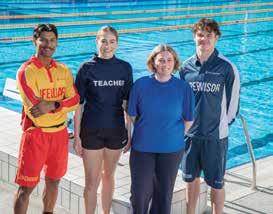
Held in June at the Melbourne Convention and Exhibition Centre, the National Sports and Physical Activity Convention (NSC) 2025 brought together leaders and innovators from across sport, recreation, aquatics and leisure to shape the future of the sector.
Royal Life Saving Australia was proud to partner with NSC to deliver the Aquatic and Leisure Management Stream and support ten Emerging Leaders Scholars from across Australia - reflecting our ongoing commitment to strengthening industry capability and fostering the next generation of aquatic and leisure leaders.
Exploring the Evolving Role of Aquatic and Leisure Centres
The Aquatic and Leisure Management Stream showcased how aquatic facilities are evolving from traditional pools and gyms into vital community wellbeing hubs that support inclusion, social connection and preventative health outcomes.
Program highlights included:
Public–Private Partnerships and Infrastructure Investment
Industry and government leaders explored new investment models to future-proof public aquatic facilities.
Diversity, Equity and Inclusion (DEI)
New research and workforce insights, presented by Dr Carleigh Yeomans and RJ Houston, highlighted practical strategies to advance inclusion and workforce diversity.
Workforce Wellbeing and Safety
Leaders including Jacqui O’Dwyer, Scott Vanderheyden and Paul McPherson shared organisational responses to occupational violence and psychosocial risk.
Measuring Social Impact
Experts discussed data-led approaches to quantifying the health and social value of aquatic and leisure centres.
Facility Innovation
Operators shared case studies on how modern aquatic centres are adapting to meet changing community needs.
Collectively, these sessions reinforced that aquatic and leisure facilities are critical health, social and water safety hubs that must continue to evolve to serve diverse communities.
“This year’s stream reaffirmed how aquatic and leisure facilities are vital health, social, water safety and drowning prevention hubs nationwide,” said Dr Justin Scarr, Chief Executive Officer, Royal Life Saving Australia.
“It was inspiring to see the sector’s shared desire to innovate, include and adapt.”
Martin Sheppard, CEO of the NSC, added: “Our collaboration with Royal Life Saving ensures the evolving needs of the aquatic and leisure industry remain front and centre. Together, we can drive sustainable practice, foster inclusion and maximise the value of our facilities for all Australians.”
Royal Life Saving was proud to sponsor ten early-career professionals representing every state and territory to attend NSC as Emerging Leaders Scholars. These young leaders engaged in national discussions on inclusion, infrastructure and community impact, bringing new ideas and energy to the sector’s future.
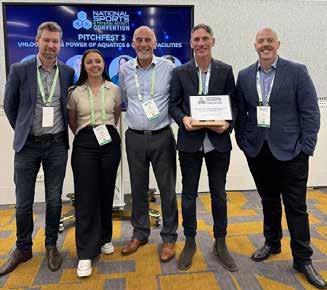
Left to Right – Alex Burrows, CEO, ActiveXchange, Dr Carleigh Yeomans, Swinburne University, Dr Jeff Walkley, CEO, Belgravia Foundation, Ian Boorman, Executive Manager Strategy & Impact, the Y, & RJ Houston, General Manager Capability and Industry, Royal Life Saving Australia.

Royal Life Saving Australia continues to lead innovation in aquatic safety, hosting a series of national demonstration events to showcase Lynxight’s AI-powered drowning prevention technology - an emerging tool designed to strengthen lifeguard supervision and enhance safety at public pools.
Research from Royal Life Saving shows that in the past year alone there were an estimated 8,000 lifeguard rescues at public pools, but tragically six drowning deaths and around 18 non-fatal drownings.
Every improvement that helps lifeguards detect and respond to incidents faster is critical - and deserves exploration by pool owners and operators.
The AI Aquatic Safety Demo Days, hosted in partnership with Life Saving Victoria, Royal Life Saving New South Wales and Royal Life Saving Queensland, took place at Maribyrnong Aquatic Centre (VIC), Oran Park Leisure Centre (NSW) and Gould Adams Aquatic Centre (QLD).
These events brought together aquatic facility operators, managers, and safety authorities to witness live demonstrations of Lynxight’s real-time monitoring, incident detection and predictive analytics capabilities - showing how technology can complement, not replace, the vital role of trained lifeguards.
“This technology empowers lifeguards with tools to respond faster and more effectively,” said Dan Mulvey, General Manager, Lynxight.
“We’re grateful to Royal Life Saving for their collaboration and commitment to innovation in aquatic safety.”
Human Expertise Meets AI Innovation
Lynxight’s system uses overhead cameras and AI software to detect unusual water movement and immediately alert lifeguards via smartwatches, pinpointing potential incidents and enabling faster intervention.
The system is already operational at Gould Adams Park Aquatic Centre in Queensland, providing valuable real-world insights into the benefits of technology-assisted supervision.
“Supervision in public pools can be challenging,” said RJ Houston, General Manager – Capability and Industry, Royal Life Saving Australia.
“By blending human expertise with nextgeneration tools, we can strengthen lifeguards’ prevention and rescue roles and continue to advance public safety.”
Royal Life Saving Australia thanks its collaborators - Lynxight, Life Saving Victoria, Royal Life Saving NSW and Royal Life Saving QLD for their support and shared commitment to safety innovation.
Communities working together to create safer aquatic environments
A core theme of the Australian Water Safety Strategy 2030 is the development of a Local Water Safety Plan for every community.
These plans serve to outline both current and future community-based drowning prevention actions tailored to the specific needs and contexts of individual communities. The approach emphasises evidence-based solutions, multisectoral collaboration and consideration of the varying capabilities and needs of stakeholders, including community and government organisations, as well as vulnerable groups.
By implementing Local Water Safety Plans, communities can take a leadership role in addressing drowning prevention, working together to create safer aquatic environments for everyone.
Royal Life Saving has been actively supporting the development of these plans across the country, ensuring tailored approaches to water safety that address the unique needs of each region.

Key benefits of developing Local Water Safety Plans: Prevent future drownings and save lives.
Provide leadership on a crucial social, health and economic issue.
Reduce the negative social, health and economic impacts of drowning in the community.
Collect and utilise local data and research to better understand drowning risks and factors.
Profile and analyse local drowning issues and risk factors.
Foster a common understanding of water safety challenges unique to the region.
Build stronger ties with community groups and relevant agencies.
Highlight key research and data relevant to the area for stakeholders with water safety responsibilities.
Support collaborative efforts to create a collective strategy for the region.
Develop evidence-based solutions that contribute to a comprehensive local drowning prevention plan.
Align with international and national frameworks to demonstrate proactive drowning prevention actions.
LEARN MORE ABOUT LOCAL WATER SAFETY PLANS royallifesaving.com.au/localwatersafetyplans


With a shared goal of eliminating drowning along the River Murray, the River Murray Safety Working Group continues to strengthen its coordinated, community-led approach to water safety in South Australia.
Established under the Australian Government–funded Inland Communities Water Safety Blackspot Program, the Working Group brings together South Australia Police (SAPOL), Royal Life Saving Australia, local councils, emergency services, and community organisations.
The group aligns its local strategy with the Australian Water Safety Strategy 2030 and the South Australian Water Safety Plan, ensuring that regional priorities contribute directly to national drowning prevention goals.
Since its formation, the Working Group has delivered a series of joint initiatives that have improved safety outcomes and strengthened collaboration across the Riverland.
Recent highlights include:
• Enhanced data sharing and resource coordination between agencies.
• Integrated education and training programs across jurisdictions.
• High-visibility community campaigns promoting safe behaviour on and around water.
• Expanded patrols and enforcement, with coordinated marine safety operations and alcohol and drug testing on vessels.
• Culturally inclusive programs providing swimming and resuscitation training to migrant workers and local communities.
These initiatives have led to greater community awareness, improved supervision, and stronger partnerships across the region.
“The River Murray Safety Working Group is a powerful example of what’s possible when multiple organisations come together with a shared purpose,” said Brooke Cherfils, Royal Life Saving Australia.
“Driven by collaboration and a deep commitment to community, we’re seeing real progress in how drowning prevention is coordinated and delivered.”

Expanding to the Murraylands
Building on its success in the Riverland - where Royal Life Saving research identified 17 drowning deaths between 2002 and 2023 - the model is now being extended to the Murraylands region, which recorded a further 16 drowning deaths over a similar period.
Senior Sergeant First Class Mark Howie, SAPOL Riverland Operations, said the initiative is now influencing safety policy at both state and regional levels:
“By intentionally addressing local challenges, we’re meeting regional needs while contributing to state and national goals to reduce drowning. The expansion into the Murraylands will strengthen coverage and resource sharing across both regions.”
Through coordinated local planning, joint campaigns, and shared leadership, the River Murray Safety Working Group is proving that place-based collaboration workscreating safer waterways, stronger partnerships, and more resilient communities across South Australia.
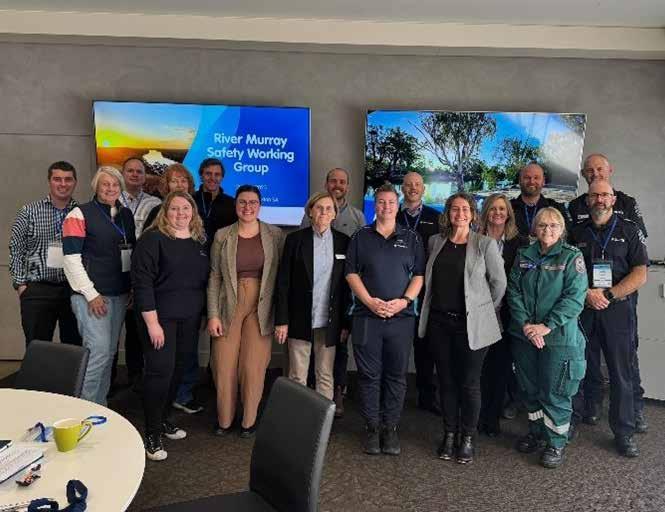
Royal Life Saving Australia’s National Guidelines for Inland Waterway Safety prioritises reducing drowning and aquatic injuries while recognising the significant health, social and economic benefits that inland waterways offer.
A 20-year analysis conducted by Royal Life Saving revealed that rivers and lakes are key locations for unintentional fatal drownings. Between 2002 and 2022, 2,021 people drowned in rivers, creeks, lakes and dams, with an average of 101 drowning deaths per year.
The guidelines provide a best-practice framework for water and landowners to collaborate with community agencies and stakeholders. They offer practical strategies to reduce the risk of drowning and aquatic injuries at inland waterways, with the key areas of focus being public rescue equipment, safety signage, designated swimming areas, and community education.
Developed in alignment with the Australian Water Safety Strategy 2030, which seeks to halve drowning rates in inland waterways by 2030, the guidelines are built on two decades of research, coronial recommendations, legal findings, policy reviews and public consultation. They are designed to guide decision-making processes that protect Australians from the risks associated with living, working and recreating around inland waterways.
The guidelines also encompass detailed risk management information, community resilience strategies, and a framework for multisectoral collaboration in drowning prevention.
To subscribe and access the guidelines: royallifesaving.com.au/guidelines-forinland-waterway-safety


Royal Life Saving Australia’s Respect the River program continues to play a vital role in reducing drowning in regional, remote and inland communities, delivering targeted education and water safety initiatives tailored to local needs.
Through on-the-ground engagement and partnerships, the program empowers communities to take ownership of water safety, build local capability, and reduce risk where it matters most.
Reaching hundreds of thousands of Australians each year, Respect the River contributes directly to the goals of the Australian Water Safety Strategy 2030 by:
Delivering lifesaving skills in areas with historically limited access to swimming and rescue programs.
Building community ownership of water safety through place-based planning and education.
Supporting risk reduction strategies that reflect local conditions and cultural contexts.
Key highlights from 2024-25:
Australian Capital Territory
The Ngadyung Aboriginal Swim and Survive program was delivered across four school terms, engaging 188 Aboriginal and Torres Strait Islander children in practical, culturally informed water safety education.
Complementing this, risk assessments and community signage projects were undertaken in partnership with ACT Parks and emergency services. This work contributes to the development of a new ACT Drowning Prevention Plan, supporting long-term, localised solutions to inland waterway risks.
New South Wales
Royal Life Saving NSW partnered with councils and community organisations to deliver swimming, CPR, and water safety programs in Broken Hill, Dubbo, Walgett, Moree, and Griffith - all high-risk inland communities.
A regional stakeholder roundtable in April 2025 united local leaders and service providers to identify shared priorities, with strong engagement from Aboriginal and CALD communities.
Northern Territory
Programs were delivered in Katherine, Tennant Creek, Galiwin’ku, Yuendumu and other remote communities, combining CPR education, inland water safety and tailored sessions for Aboriginal children and families. Local pools and schools played a vital role in ensuring consistent participation and community leadership.

Queensland Programs spanned 14 local government areas, reaching over 400 participants.
Despite flooding disruptions, survival swimming and water safety talks were successfully delivered.
The Migrant Water Safety Program in Gympie was a highlight, engaging multicultural families, while partnerships with Aboriginal and Torres Strait Islander communities remained strong.
South Australia
Programs were delivered in Renmark, Berri, Murray Bridge, and Port Augusta, with a focus on strengthening community-led water safety planning. Over 20 partnerships were activated across local government, Aboriginal health, and education sectors.
An emphasis on co-design ensured the program remained responsive and inclusive, particularly in communities along the Murray River and Eyre Peninsula.
Tasmania
Programs in Huonville, George Town, Devonport and Launceston focused on increasing participation in swimming and CPR education, with 113 swim participants and 92 CPR participants.
Collaboration with schools and health organisations helped improve access for migrant and Aboriginal populations. Local teacher workshops and public activations reinforced safety messages and built longterm capacity.
Victoria
Programs were delivered across regional centres including Mildura, Shepparton, Bendigo, Swan Hill, Wangaratta and Geelong. The program reached over 300 participants through a combination of inland waterway safety talks, CPR education, and educator workshops focused on local risk.
Strong partnerships were established with CALD organisations, Aboriginal services and local councils, ensuring the program was both accessible and community led. While some challenges were noted in sustaining engagement with migrant youth, these were addressed through targeted outreach and collaboration with health navigators. All deliverables were achieved, with clear attribution and strong local engagement across each region.
Western Australia
Programs were delivered in Jigalong, Warmun, Fitzroy Crossing, Derby and Karratha, reaching Aboriginal children and families in some of the state’s most remote communities. While flooding prevented full delivery in Fitzroy Crossing, communities remained engaged through education and risk awareness sessions. In Jigalong, pool-based learning replaced dry riverbed sites - demonstrating flexibility and cultural responsiveness in delivery.
WA’s program also generated strong media and social media coverage, building awareness and advocacy for water safety in remote inland regions.

Striving for consistent brand, united voice, an aligned workforce and membership, and agile and impactful social enterprises.
Across Australia, Royal Life Saving’s State and Territory Member Organisations continue to demonstrate the power of collaboration - working together to increase access to swimming, water safety and aquatic recreation through programs, partnerships and community events.
This year we celebrated key milestones and collective achievements that strengthened our shared mission to eliminate drowning and empower communities.
Embedding Reconciliation through Collaboration and Cultural Learning.
Showcasing teamwork through the Pool Lifeguard Challenges. Celebrating milestone anniversaries.
Strengthening national leadership and alignment.
Delivering inclusive, community-based programs, building skills, confidence and connection around water.
Recognising outstanding service.




In 2022, Royal Life Saving Australia launched its Reconciliation Action Plan (RAP), committing to meaningful reconciliation with First Nations people. Guided by relationships, respect and opportunities, the RAP focuses on creating lasting benefits for Aboriginal and Torres Strait Islander communities by fostering economic equity and supporting self-determination.
We aim to strengthen partnerships that empower these communities to lead, design and participate in water safety programs, enhancing safety, recreation and employment opportunities. We are working towards our Innovate RAP and hope to finalise this in 2026.
Demonstrated our commitment to supporting Indigenous-owned and operated businesses, sourcing presenter gifts for the National Water Safety Summit and prizes for World Drowning Prevention Day through Aboriginal suppliers as part of our RAP procurement actions.
Strengthened collaboration with the Guunu-Maana (Heal) Aboriginal and Torres Strait Islander Health Program at The George Institute for Global Health, building on the Cultural Connections to Water research. Indigenous partners actively contributed to the Australian Water Safety Strategy review, ensuring that Aboriginal and Torres Strait Islander perspectives informed the national drowning prevention agenda.
Hosted a webinar during National Reconciliation Week with the authors of the Cultural Connection to Water report, creating an opportunity for staff to deepen their understanding of cultural connections to water and how these can shape more inclusive programs and partnerships.

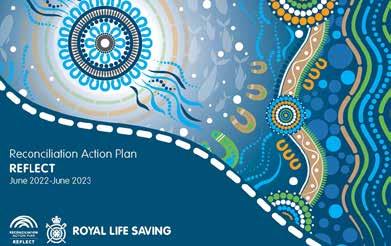
Visit: royallifesaving.com.au/reconciliationactionplan
Royal Life Saving’s annual Pool Lifeguard Challenges showcase the skill, teamwork, and professionalism of Australia’s pool lifeguards. Hosted by State and Territory Member Organisations, these events test lifeguards’ fitness, communication, and emergency response skills through a series of simulated real-life rescue and first aid scenarios.
Each challenge brings together teams of four lifeguards representing their local aquatic facility. Working under pressure, teams are assessed on their ability to manage incidents, perform rescues, and demonstrate sound judgment - all essential skills for keeping Australia’s pools safe.
This initiative continues to strengthen industry standards and foster professional development, camaraderie, and pride across the aquatic workforce.
These events not only celebrate lifeguard excellence but also reinforce the importance of continuous training, teamwork, and leadership in creating safer aquatic environments across Australia.
Event Highlights




In 2024–25, Royal Life Saving marked three extraordinary anniversaries, celebrating the contribution of our State and Territory Offices to saving lives, building skills, and strengthening communities through water safety.
Royal Life Saving NSW proudly commemorated 130 years of lifesaving service with a landmark exhibition, Waterway of Life: 130 Summers of Royal Life Saving, hosted at the NSW Parliament House in April 2025.
The exhibition celebrated the organisation’s heritage and impact, featuring archival photographs, data, memorabilia and education displays.
The official launch brought together The Hon. Chris Minns MP, Premier of NSW, Olympian Sam Fricker, NSW Members of Parliament, and leaders from aquatic, education and emergency servicesrecognising 130 years of dedication to community safety, inclusion and advocacy.
Royal Life Saving Society Queensland celebrated 120 years of service - a milestone reflecting more than a century of commitment to water safety, community education and lifesaving activities.
Distinguished guests, including The Hon. Dan Purdie MP, Minister for Police and Emergency Services, and Chris Stream, Acting Assistant Deputy Commissioner, honoured the organisation’s long-standing leadership and collaboration in empowering Queenslanders to enjoy the water safely.
In July 2025, Royal Life Saving NT celebrated 60 years of lifesaving service at a special event hosted at Government House by His Honour Professor Hugh Heggie, Administrator of the Northern Territory, and Ms Ruth Jones.
Board Members, staff and volunteers were recognised for their outstanding commitment to water safety education and drowning prevention across the Territory - honouring six decades of community service and impact in one of Australia’s most diverse aquatic environments.



Together, these events reinforced Royal Life Saving’s commitment to collaboration, purpose and leadership, ensuring the organisation remains well-positioned to deliver on its mission to eliminate drowning and empower communities nationwide.

Royal Life Saving Australia Conference and Annual General Meeting 8 and 9 November 2024 - Adelaide
Royal Life Saving Australia’s 2024 Conference and Annual General Meeting brought together Board Members, CEOs and operational team members to advance a shared vision for the decade ahead. The two-day event marked the launch of the Royal Life Saving Strategic Framework 2024–2030, reaffirming our purpose, values and long-term priorities. Discussions centred on strengthening alignment across the network, fostering collaboration, and investing in the skills and capabilities of our volunteers, staff and members to drive collective impact.

Executive Leadership Meeting 26 and 27 February 2025 - Gold Coast
Hosted in February, the National Executive Meeting focused on operationalising the Royal Life Saving Strategic Framework 2030. Leaders from across Australia explored the key issues, priorities and capabilities that define Royal Life Saving’s national identity - ensuring consistency in purpose, shared accountability and unity in action.

Aqua Safe:
Empowering Children with Water Safety Skills
The Aqua Safe Water Safety and Awareness Program is an initiative that empowers Year 2 students in ACT public schools with the vital skills and knowledge to stay safe around water.
Developed in partnership with the ACT Government’s Education Directorate, and delivered by Royal Life Saving, the program offers a comprehensive and structured learning experience across two weeks - 10 days of pool-based instruction combined with five classroom-based lessons.
Royal Life Saving facilitates the entire program, including student transportation, ensuring equitable access for all participating schools. In tandem with in-water learning, dedicated online resources assist teachers in delivering classroom content and assessing students’ swimming proficiency.
Over the past 12 months, the program has supported more than 1,000 children from 21 ACT schools, fostering increased awareness, safety, and confidence in aquatic environments.
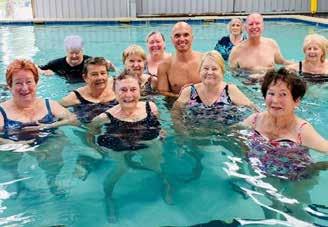
Connecting Seniors: Promoting Active, Confident and Connected Older Adults
The Connecting Seniors Program, a pilot initiative encouraging older adults to embrace aquatic fitness while learning vital lifesaving and CPR skills. Funded by the NSW Government’s Connecting Seniors Grant, the program was delivered in partnership with regional councils and community pools across 10 locations, including Batemans Bay, Goulburn, the Central Coast, Maitland and Tweed.
More than 240 participants took part in low-impact aqua sessions, CPR awareness training and social morning teas - helping seniors build fitness, confidence and connection. Evaluation showed 100% of participants felt more confident performing CPR and most intended to continue aquatic exercise as part of their regular routine.
Royal Life Saving NSW was appointed by the NSW Government as a lead delivery partner in the Learn to Swim for At-Risk Communities initiative, launching Project Elevate in May 2025.
Designed around equity, access and tailored education, the program targets priority populations including First Nations peoples, culturally and linguistically diverse (CALD) communities, low-socio-economic groups, and those in regional and remote areas. Project Elevate incorporates four purpose-built streams:
1. Regional Children (ages 3–14)
2. Primary Schools (Year 2)
3. High Schools (Years 7–8)
4. Adult Learners
This large-scale program will deliver more than 100,000 free swimming and water safety lessons across New South Wales, reaching people and places that need them most.

Reaching Remote Communities:
Swim, Survive and Strive
Royal Life Saving Northern Territory continues to expand access to swimming and water safety education across some of Australia’s most remote regions. In 2024–25, the Remote Swim, Survive and Strive project reached 21 remote community locations, engaging 1,714 people and enabling 752 children from 13 schools to participate in swimming, lifesaving and pool carnivals.
42 students achieved the national swimming and water safety benchmark (Level 7 or above), while 343 community members completed accredited training, building local capability for ongoing pool operations and education programs.
Delivered in partnership with local schools, councils and community organisations, the project continues to create opportunities for children and adults alike to gain confidence, develop lifesaving skills and strengthen community safety around water.
Royal Life Saving Northern Territory continues to invest in training and workforce capability to ensure communities across the Territory are equipped with essential aquatic and lifesaving skills.
In 2024–25, 8,732 training certificates were issued, with 43% of all courses delivered in regional and remote areas. A further 3,811 Statements of Attainment were awarded through 287 training courses to 1,995 participants, supporting employment and career pathways across the aquatic sector.
From pool lifeguards and swim teachers to first aid and resuscitation, these programs build the skills that keep communities safe and active.
To view full Annual Reports from State and Territory Member Organisations visit: RoyalLifeSaving.com.au

The NextGEN Lifesavers Program empowers young people aged 8–17 years to develop vital lifesaving and water safety skills.
Delivered across Queensland - from metropolitan centres to regional communities - the program promotes lifesaving sport, builds aquatic confidence and encourages long-term participation in the aquatic industry.
By supporting facilities and community organisations to self-deliver through professional development and instructor training, NextGEN Lifesavers is creating a sustainable model that drives growth and engagement.
The program also aims to inspire future lifeguards, swim teachers and aquatic professionals, helping young Queenslanders build confidence, teamwork and leadership skills while strengthening the state’s future aquatic workforce.
The Water STAARS (Safety, Training, Awareness, Access, Recreation and Skills) program continues to make aquatic participation accessible for people with disability across Queensland.
Led by Royal Life Saving Queensland’s qualified Disability Instructors, Water STAARS provides safe, supportive sessions that build confidence, water safety knowledge and independence.
Participants learn essential skills such as lifejacket use, reach-and-throw rescues, CPR and First Aid, all tailored to individual needs and abilities.
Through Water STAARS, Royal Life Saving Queensland ensures that everyone - regardless of age, background or ability - can experience the joy of water safely and with confidence, promoting inclusion and participation across the community.
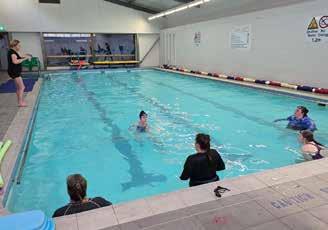
Women’s-Only and Family Water Safety Programs
Program delivery and community engagement gained strong momentum in 2024–25, with a growing focus on inclusivity, women’s participation and culturally diverse communities.
A highlight was the Women’s-Only Program, which launched with high demand, validating the need for culturally safe and gender-specific aquatic education. Following its success, three additional programs were confirmed, alongside plans to expand into a second western suburbs location.
Royal Life Saving SA also advanced Program 2 under the Communities for Children initiative, extending family-focused water safety education to support early intervention and intergenerational learning.
Confidence in the Water:
A Sensory-Friendly Aquatic Safety Experience
Royal Life Saving South Australia developed Confidence in the Water to make swimming and water safety education accessible and inclusive for autistic people and individuals living with disability.
The program provides a calm, supportive and sensoryaware environment where participants can build water confidence, learn essential safety skills and connect socially without pressure.
Using visual supports, gentle guidance and sensoryfriendly teaching methods, sessions were delivered across Adelaide, helping more people feel safe, comfortable and included in aquatic spaces.
By creating environments that recognise individual needs, Royal Life Saving SA continues to remove barriers to participation and promote inclusionensuring that everyone, regardless of ability, can enjoy water safely and confidently.

Mole Creek Pool to Reopen:
A Community Reunited Through Lifesaving Support
After two years of closure due to a lifeguard shortage, the Mole Creek Swimming Pool will officially reopen this summer thanks to a powerful partnership between Royal Life Saving Tasmania and TasNetworks.
Through TasNetworks’ Community Grants Program, Royal Life Saving Tasmania secured funding to deliver lifeguard training for 14 local volunteers. This essential training will enable the community to once again access a cherished recreational space - just in time for the summer school holidays.
The lifeguard team reflects the incredible dedication of the Mole Creek community, with volunteers ranging in age from 16 to 66. Lifeguard training is scheduled for late September, followed by a thorough clean-up and maintenance phase led by members of the Mole Creek Progress Association, who manage the facility.
Located in Tasmania’s Meander Valley, the Mole Creek Swimming Pool has been a central pillar of the community for over 40 years. Its closure left a significant gap in local recreation and water safety education, particularly for children and families with limited access to alternative aquatic facilities.
Thanks to this initiative, the pool is scheduled to reopen in early December, bringing renewed opportunities for exercise, connection, and water safety.

Life Saving Victoria’s Diversity and Inclusion Department reached a record 31,597 participants in 2024–25, the highest engagement in nearly two decades. Programs were tailored to meet the needs of culturally and linguistically diverse communities, seniors and people with disability, helping more Victorians access swimming and water safety education.
Among participants, 80 individuals were inspired to pursue aquatic qualifications, including swim teaching, first aid, pool lifeguarding and volunteer lifesavingwith many now working or volunteering within the aquatic industry.
A standout partnership was developed with Melbourne’s Sikh community, which took a leadership role in promoting water safety among multicultural Victorians. Through this collaboration, 233 adults learned to swim and gained vital water safety knowledge, strengthening community confidence and inclusion around water.
Life Saving Victoria’s innovative e-learning platform, Swim City, continues to make swimming and water safety education accessible to children across the state.
Designed for primary school-aged students, Swim City uses interactive, game-based learning to teach safety knowledge across different environments. In 2024–25, a new Farm Module was launched, supported by KidSafe Victoria, to help children in rural and regional areas identify and avoid water hazards on properties and farms.
Since its launch in 2021, Swim City has recorded more than 25,000 online engagements, demonstrating strong uptake and value for teachers, parents and students alike.

Multicultural Swimming Lessons Build Skills for Life Royal Life Saving Western Australia’s multicultural swimming programs continue to make a meaningful impact across the State.
In 2024–25, more than 700 adults and children from culturally and linguistically diverse (CaLD) backgrounds participated in lessons across Perth and Bunbury, including at Balga, Riverton, Wangara, Cannington and Bunbury.
The programs provide safe, supportive environments for people - many of them recent arrivals or from refugee backgrounds - to develop essential swimming and water safety skills. With 40% of WA drowning deaths involving people born overseas, and two-thirds of these from non-English speaking backgrounds, the need for accessible programs remains clear.
Through collaboration with local councils, community organisations, volunteers and the Department of Local Government, Sport and Cultural Industries, Royal Life Saving WA is helping communities gain confidence, connection and skills for life.
In April 2025, students and families from Warmun swapped the classroom for the creek, learning vital inland water safety and survival skills on Country.
The session at Turkey Creek brought together 20 children and nine adults to learn how to assess local environments, identify hazards and stay safe in moving water. Participants practised floating, using lifejackets, rope throws and everyday items - such as towels, t-shirts and branches - to perform rescues.
The program built on earlier sessions in Wilson River and Bow River and reinforced practical safety skills in remote communities. Delivered in partnership with Ngalangangpum School, the initiative highlighted the importance of culturally responsive, hands-on learning to keep children and families safe around inland waterways.

Tony Bandle has devoted more than two decades of volunteer service to Royal Life Saving, demonstrating exceptional leadership and financial stewardship. Joining the ACT Board in 1996 as Honorary Treasurer, he served in that role for an incredible 23 years, guiding the organisation’s financial management, audits, and grant processes. His expertise extended nationally as both Director of Finance and Chair of the Finance and Audit Committee, supporting effective governance across the Society. Tony’s skill, professionalism, and integrity have strengthened Royal Life Saving’s financial foundations, enabling its mission to thrive.

Randall Cook has dedicated nearly four decades to Royal Life Saving, making an enduring impact at local, state, and national levels. Beginning his volunteering in Victoria and continuing in the Northern Territory, Randall has served as NT President, National Director, and Deputy President of Royal Life Saving Society - Australia. His strategic leadership has guided the NT Board’s transformation into a high-performing governing body while championing water safety policy as interim Chair of the NT Water Safety Advisory Council. Randall brings exceptional foresight, professionalism, and compassion to every endeavour.

Over four decades, Brione Rundle has made an extraordinary contribution to Royal Life Saving across both the Northern Territory and South Australia. Her lifelong dedication to water safety is reflected in her diverse roles as an instructor, examiner, coach, technical official, and board member. Brione has educated countless children and adults in lifesaving and CPR, coordinated large-scale programs such as VACSWIM, and overseen national and international pool lifesaving competitions. As a board and committee leader, she continues to mentor and advocate for excellence across all aspects of the organisation.

Jo-ann and Michael Morris Medal of the Order of Australia
Royal Life Saving Australia congratulates Jo-ann and Michael Morris, awarded the Medal of the Order of Australia (OAM) for their outstanding service to the community through charitable and advocacy work. Following the non-fatal drowning of their son Samuel in 2006, they established the Samuel Morris Foundation, becoming tireless advocates for children with disabilities and families impacted by non-fatal drowning. Their leadership has shaped national and international water safety policy, improved support for survivors, and inspired lasting change.

With over 40 years of volunteer service, Fritz Risler is a pillar of the lifesaving community in the Northern Territory. A dedicated teacher and coach, Fritz has inspired generations of lifesavers - from young athletes to adults and seniors learning to swim for the first time. His volunteerism spans board leadership, coaching, and countless community events, where he actively promotes water safety and confidence. As a past president of Royal Life Saving NT, Fritz’s inclusive and compassionate leadership style has shaped the organisation’s culture and success.
Royal Life Saving Society –Australia
Life Governors
2015 John McClelland AM (QLD)
2015 Alan B.Swinton OAM QPM (TAS)
2018 Daphne Read AO (NT)
2022 Terence Higgins AO (ACT)
2024 Randall Cook (NT)
Past Presidents
1934-1951 Sir Thomas W White
1951-1977 Justice Percy Joske
1977-1979 Sir Percy Joske
1979-1987 Sir Basil Osborne CBE
1987-1994 Neville Bayfield OAM
1994-1997 Heather MacGowan OAM
1997-2003 Chief Justice Terence Higgins AO QC
2003-2009 Dr Shayne Baker OAM
2009-2011 Chief Justice Terence Higgins AO QC
2011-2012 Les Mole JP
2012 -2015 Dianne Montalto ESM
2015-2018 Penelope Snashall
2018-2021 Cameron Eglington
2021-2023 Dr Mitchell Hartman
1995 Neville Bayfield OAM (NSW)
1995 Gerald Brameld OAM (QLD)
1998 Victor John Dennis (WA)
1998 Ian Mackie AM (NAT)
1998 Gwendolyn Welford BEM(C) (QLD)
1999 Alan B. Swinton OAM QPM (TAS)
2000 V.J Forde AM (SA)
2000 John McClelland AM (QLD)
2002 Heather MacGowan OAM (WA)
2004 Theresa Leopold (SA)
2004 Faye Trevor (SA)
2005 Lesley Bartlett (SA)
2005 Professor John Pearn AO RFD (QLD)
2005 Patricia Quick (SA)
2006 Jan Burton (SA)
2006 C Dedman (SA)
2006 David Dewar (SA)
2006 Raymond M Martin OAM (SA)
2006 Vincent McStraw (SA)
2006 Mark Needham (SA)
2006 Ann Price (SA)
2007 John Kew (SA)
2007 Hayden Lamshed (SA)
2007 Faye Milham (SA)
2008 Dorothy E Brown OAM (NSW)
2009 Rod Welford (QLD)
2010 The Hon.Terence Higgins AO QC (ACT)
2010 Dianne Montalto ESM (VIC)
2010 Barbara Morgan OAM (VIC)
2010 Karen Freak (SA)
2011 Robyn Pryce-Jones (TAS)
2013 Anne-Maree Gardiner AM (VIC)
2013 Gary W Kearney (TAS)
2013 Sandra Vander Pal (VIC)
2014 Les Mole JP (QLD)
2014 Daphne Read AO (NT)
2016 Ernita McGrath (NSW)
2016 Glenda Bowen Pain AM (SA)
2017 Dr Shayne Baker OAM (QLD)
2018 Tom Ballantyne (WA)
2019 Randall Cook (NT)
2020 Pam Neenan (NSW)
2021 Kevin Burrowes OAM (SA)
2022 Marion Price (SA)
2023 Carolyn Asher (QLD)
2024 Brione Rundle (SA)
2024 Anthony (Tony) Bandle (ACT)
2024 Fritz Risler (NT)
Royal Life Saving Society –Commonwealth
Honorary Life Governors
1977 Baden Pattinson (SA)
1981 W Blakeney (NSW)
1981 George Turnbull (NSW)
1984 Francis Henry (NSW)
1999 Kevin Burrowes OAM (SA)
1999 Barry Stanton (SA)
2004 John Kew (SA)
2004 Raymond M Martin OAM (SA)
2004 Ann Price (SA)
2011 Lesley Bartlett (SA)
2011 Theresa Leopold (SA)
2011 Patricia Quick (SA)
2011 Faye Trevor (SA)
2012 Alan B.Swinton OAM QPM (TAS)
Honorary Life Members
1977 Francis Henry (NSW)
1977 George Turnbull (NSW)
1983 P Margaret Stevens (VIC)
1988 Stanley Blanks (VIC)
1988 Cam Fitzgerald (VIC)
1990 Jack Farmer (VIC)
1993 James Burrowes (VIC)
1994 Norman Farmer AM ESM (Nat)
1995 Kevin Burrowes OAM (SA)
1995 Phillip Rice (VIC)
1995 Ken Southgate (QLD)
1995 Barry Stanton (SA)
1999 Dr Mervyn Allen (SA)
1999 John Coles (SA)
1999 V J Forde (SA)
1999 Raymond M Martin OAM (SA)
2000 John Kew (SA)
2000 G H Krueger (SA)
2000 Margaret Krueger (SA)
2001 Ann Price (SA)
2003 Gerald Brameld OAM (QLD)
2003 John McClelland AM (QLD)
2004 Bruce Campbell (QLD)
2004 Anita Eifler (WA)
2004 Ross Williams (QLD)
2005 Alan B.Swinton OAM QPM (TAS)
2006 Theresa Leopold (SA)
2006 Faye Trevor (SA)
2007 Lesley Bartlett (SA)
2007 Theresa Leopold (SA)
2007 Patricia Quick (SA)
2007 Faye Trevor (SA)
2008 David Dewar (SA)
2009 Barbara Morgan OAM (VIC)
2011 Faye Milham (SA)
2018 Anne-Maree Gardiner AM (Nat)
2018 Gary Kearney (TAS)
2020 Roz Grey OAM (NSW)
Royal Life Saving is supported by committees and advisers across our key focus areas, harnessing the expertise and energy of our network.
National Advisers
Professor John Pearn AO RFDMedical
National Finance
and Audit Committee
Jim Whiteside (Acting Chair)
James McClelland BM OAM
Dr Justin Scarr - National
Linda Luu - National
Honours Committee
Roz Grey OAM (Chair) - NSW
James McClelland BM OAM - QLD
Brione Rundle - SA
Dianne Montalto ESM - VIC
Brooke Cherfils - National
Senior Research Fellow
Professor Richard Franklin
Dr Amy Peden
Dr John Lippman
CEO Working Group
Dr Justin Scarr (Chair) - National
Michael Ilinsky - NSW
Floss Roberts AM - NT
Paul Barry - QLD
Ben Dawson - SA
Catherine Greaves - VIC
Peter Leaversuch - WA
Training and Workforce
Development Committee
Shaun Jackson (Chair) - National
Tony Parfitt - NSW
Paul Barry - QLD
Rebecca Gawne - NT
Michelle Williams - SA
Andy Dennis and Kevin Brabazon - VIC
Ian Brown and Jacqui Byala - WA
Marketing and Communications Committee
Monique Sharp (Chair) - National
Susie Smith - National (Until May 24)
Craig Roberts - NSW
Kewley McCaskill - NSW
Floss Roberts - NT
Sarah Garrett - SA
Andrew English - VIC
Tori Glenister - VIC
Lauren Nimmo - WA
Becca Osborn - WA
Tekeah Costigan - QLD
Aquatic Risk Committee
Marty Moran (Chair) - National
RJ Houston - National
Travis Doye - WA
John East - WA
Andy Dennis - VIC
Alek Olszewski - VIC
Floss Roberts - NT
Nikki Thornhill - QLD
Craig Roberts - NSW
Jason Phillips - NSW
Research Committee
Stacey Pidgeon (Chair) - National
Will Koon - National
Lauren Miller - National
Mackenzie Haller - National
Lauren Nimmo - WA
Bernadette Matthews - VIC
Hannah Graefe (Calverley) - VIC
Alana Leabeater - VIC
Grace Strugnell - VIC
Multicultural Water Safety Committee
Stacey Pidgeon (Chair) - National
Trent Hotchkin - WA
Achol Madong - WA
David Holland - VIC
Nikki Thornhill - QLD
Beverley Hunter - QLD
Louise Smalley - NSW/ACT/TAS
Ying Fan - NSW/ACT/TAS
Lauren Sibley - SA
Water Safety Education Committee
Penny Larsen (Chair) - National
Renee Amidy - NSW
Hannah Skuodas - NSW
Laura Withers - NT
Nikki Thornhill - QLD (from Jan 2025)
Beverley Hunter - QLD (from Dec 2024)
Mattii McGill - QLD (July-Dec 2024)
Emily Musitano - SA (Jul-Dec 2024)
Michelle Williams - SA (from Jan 2025)
Jacqui Taylor - VIC
Bree Forbes - VIC
Trent Hotchkin - WA
Amy Benjamin - WA (from Jan 2025)
Anna Haslinger - WA (July-Dec 2024)
Sport Committee
Brooke Cherfils - National
Ethan Garland - NSW
Laura Withers - NT
Paul Barry - QLD
Brione Rundle - SA
Joanne Teagle - VIC
Jen Jones - WA
Roz Grey OAM
- Official Representative
Daniel Miller
- Athlete Representative
Jeannie Baxter-Reid
- Coach Representative
Anne-Maree Gardiner AM
- International Delegate
Dr Shayne Baker OAM
ALT Chair - Selections Panel
Penny Hodgers
- ALT Collaborative Panel
International Life Saving
Dr Justin Scarr
Drowning Prevention Commissioner, ILS Asia-Pacific Secretary General
Dr Amy Peden and Stacey Pidgeon Drowning Prevention Commission
Dr Shayne Baker OAM Rescue Commission
Anne-Maree Gardiner AM Sport Commission
Commonwealth Royal Life Saving Society
Alexandra Ash Board of Trustees
Anne-Maree Gardiner AM Director, Commonwealth Lifesaving Championships
Roz Grey OAM Honours
Dr Shayne Baker OAM Portfolio Director Capacity Building
James McClelland BM OAM Heritage Working Group
Global Alliance for Drowning Prevention
Dr Justin Scarr
Founding Committee, Global Strategy Working Group
The National Board of Directors for Royal Life Saving Society – Australia continues to maintain a sound and secure financial position.
STATEMENT OF COMPREHENSIVE INCOME for the year ended 30 June 2025
income attributable to the Members of RLSSA
STATEMENT OF FINANCIAL POSITION as at 30 June 2025
ASSETS
LIABILITIES
FUNDS
A copy of the audited financial statements for Royal Life Saving Society – Australia are available upon request.
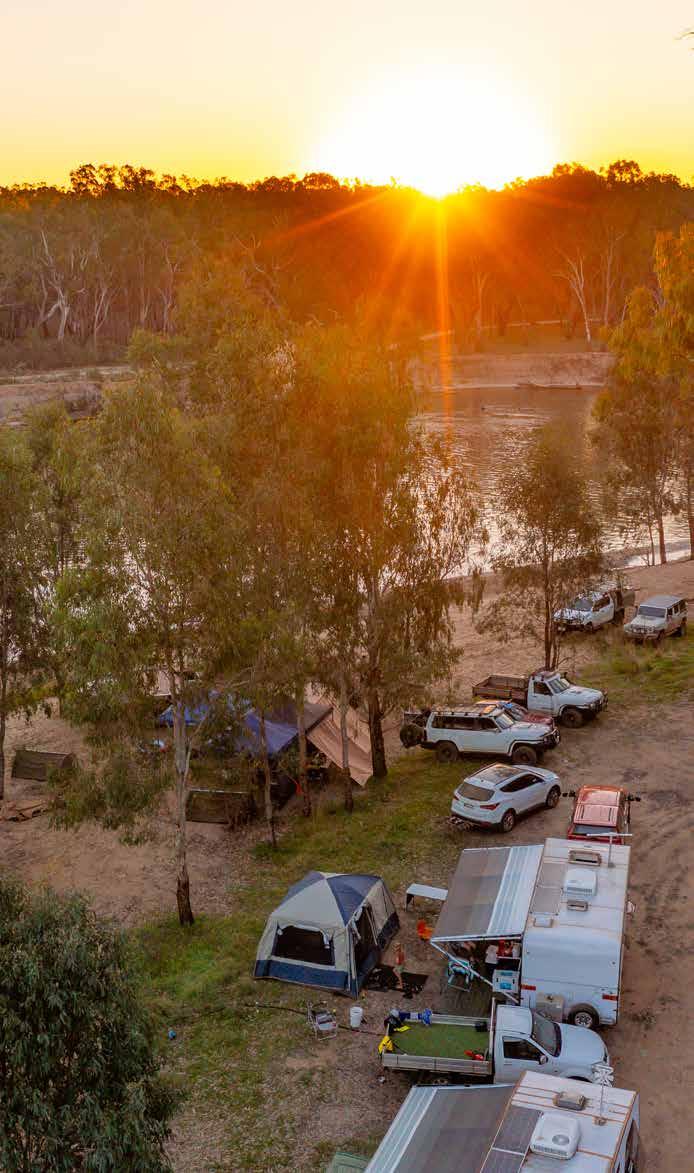
Royal Life Saving Society – Australia would like to thank the following organisations for their continued support.
Australian Government

International Organisations

Corporate Sponsors

Media Partners

Other Supporters




























